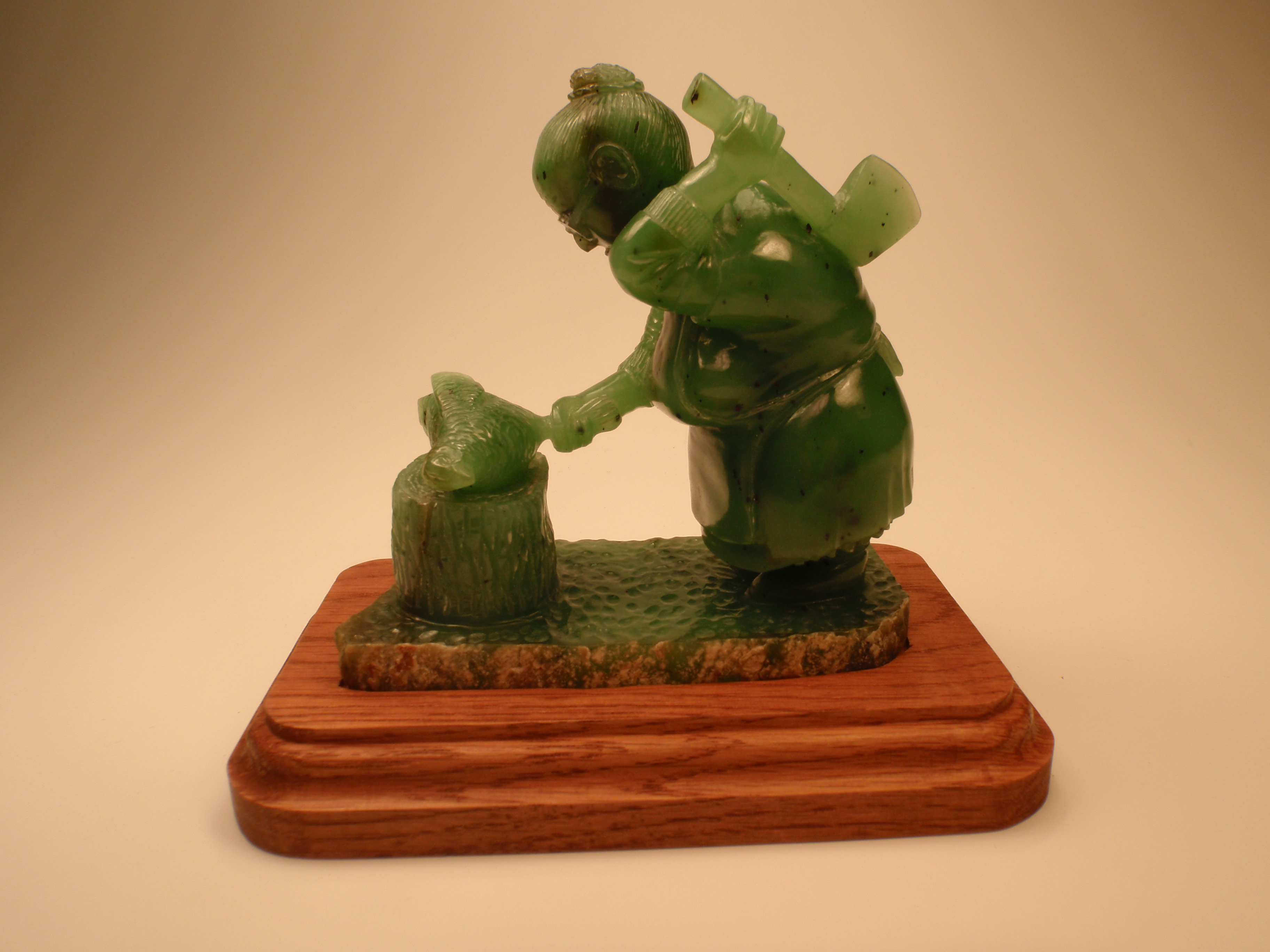Artist Spotlight: Bruce Kleeberger
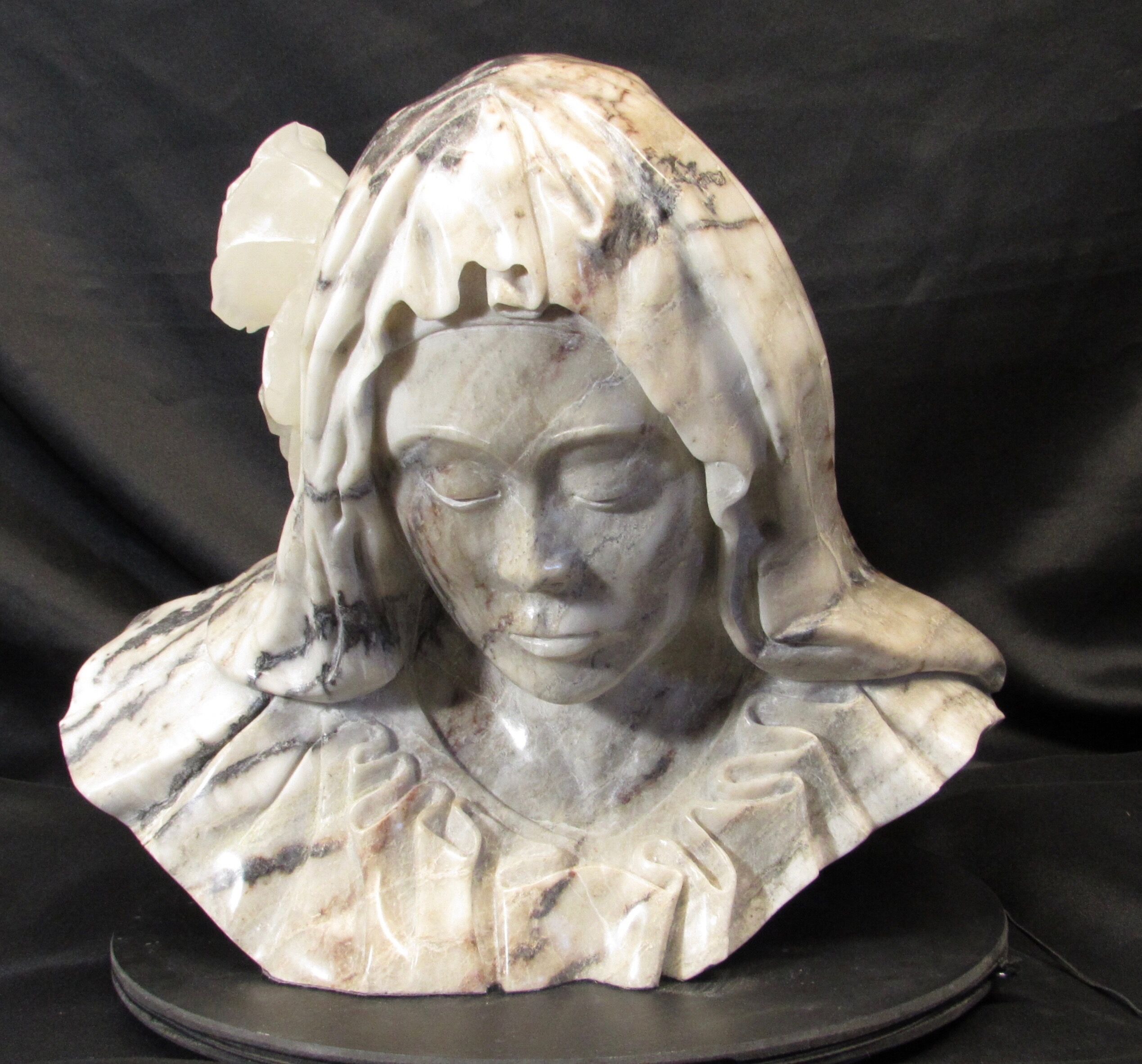 First of All
First of AllMany thanks to Penelope Crittenden, Lane Tompkins, and Ben Mefford for the opportunity to share my sculpture experience with Sculpture NorthWest readers. The NWSSA is the most welcoming and supportive organization in art I have ever experienced. I am an “emerging” artist, in my second career: my first being a satisfying and rewarding career as a dentist.
BS (Before Stone)
Although I have dabbled in drawing and three-dimensional art for twenty-five years, I no longer “live by the clock” or have the responsibility of raising my children. Now I focus on satisfying my curiosity through working with stone. If ten thousand hours is a measure of mastery of a skill, I am about one-third of the way up this learning curve. Although I also sculpt wood and clay, I keep returning to stone. My association with the NWSSA is no small part of that.
Art and Science: Discovering Stone
When discussing my art with me, people often assume a correlation between my experience in
When discussing my art with me, people often assume a correlation between my experience in

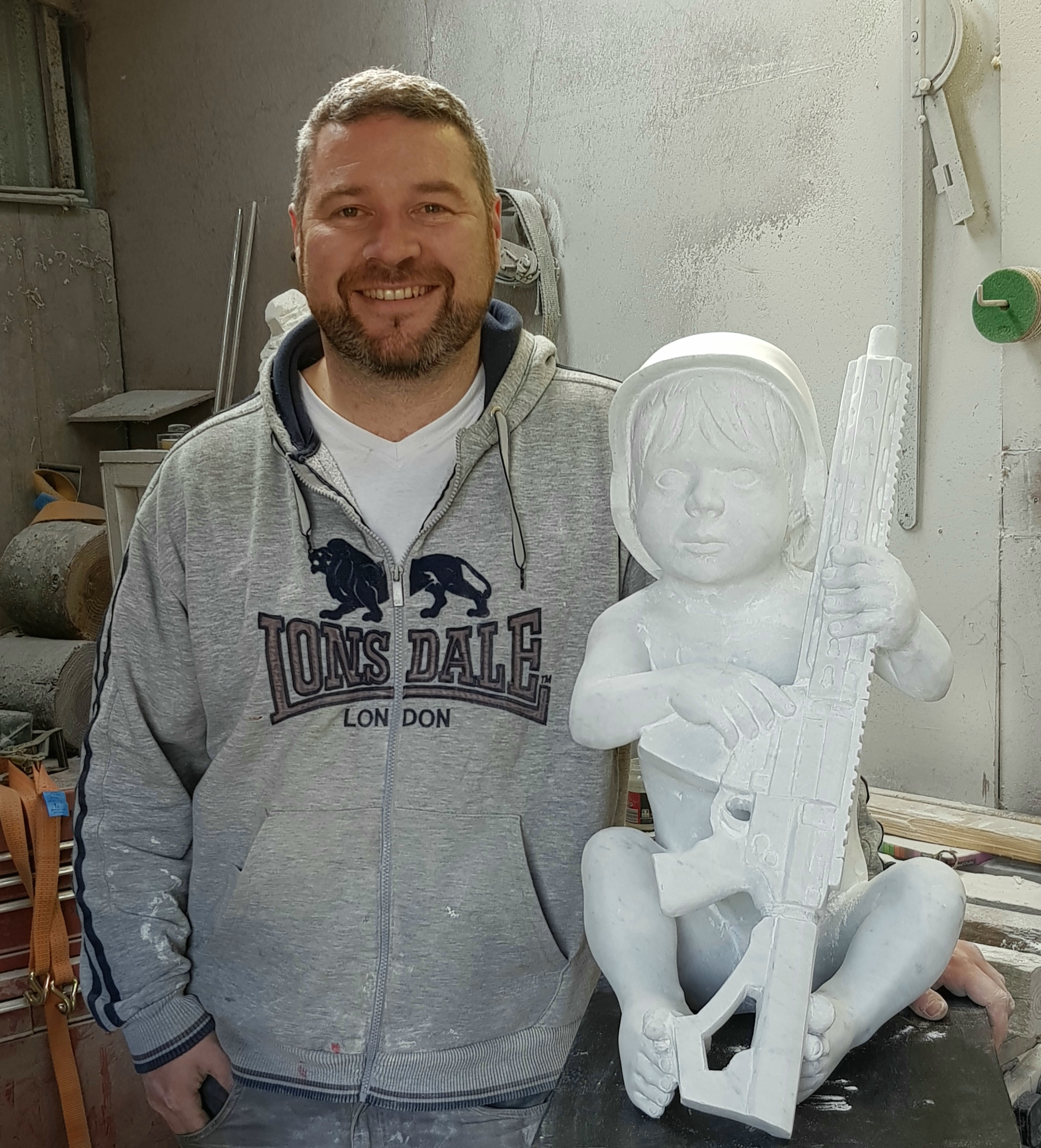
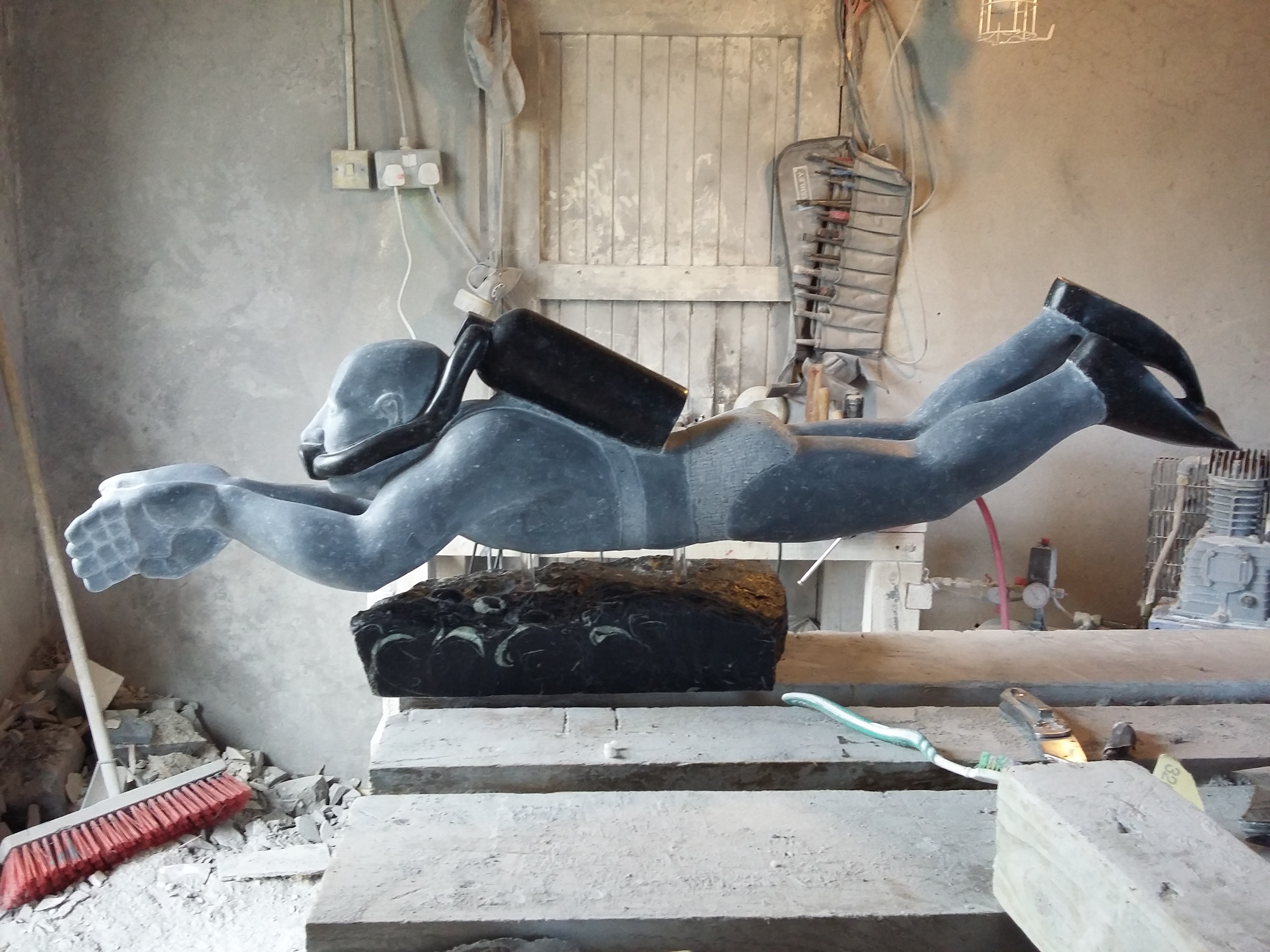 When I first attended art school I thought figurative clay and bronze was what I wanted to do. Realistic figure modeling was it; I wanted to be like Rodin. But the art school had a stone carving area…. It did not take long to find my way there. The older students, equipped with hammers and chisels, were a frenzy of dust and noise. Their forms emerging from rocks. I was hooked. I remember my tutor asking, “Do you know Eric Gill’s work?” I said no and his eyes lit up, “you’re in for a treat.” He brought me straight to the library and found a book about Gill, then Jacob Epstein. It was an awakening. Gill, Epstein, Henry Moore, Barbara Hepworth and Henri Gaudier-Brzeska are still the strongest influence on the form and style of my sculpture. I have also found inspiration in my contemporaries, even the ones that don’t carve! In terms of themes and motif, I can find inspiration in anything from a Mother with a child, drunks fighting in the street and our species’ insistence on being at war. Swimmers and Icarus figures are currently holding my interest, they defy gravity. To make a stone look weightless is a wonderful challenge.
When I first attended art school I thought figurative clay and bronze was what I wanted to do. Realistic figure modeling was it; I wanted to be like Rodin. But the art school had a stone carving area…. It did not take long to find my way there. The older students, equipped with hammers and chisels, were a frenzy of dust and noise. Their forms emerging from rocks. I was hooked. I remember my tutor asking, “Do you know Eric Gill’s work?” I said no and his eyes lit up, “you’re in for a treat.” He brought me straight to the library and found a book about Gill, then Jacob Epstein. It was an awakening. Gill, Epstein, Henry Moore, Barbara Hepworth and Henri Gaudier-Brzeska are still the strongest influence on the form and style of my sculpture. I have also found inspiration in my contemporaries, even the ones that don’t carve! In terms of themes and motif, I can find inspiration in anything from a Mother with a child, drunks fighting in the street and our species’ insistence on being at war. Swimmers and Icarus figures are currently holding my interest, they defy gravity. To make a stone look weightless is a wonderful challenge.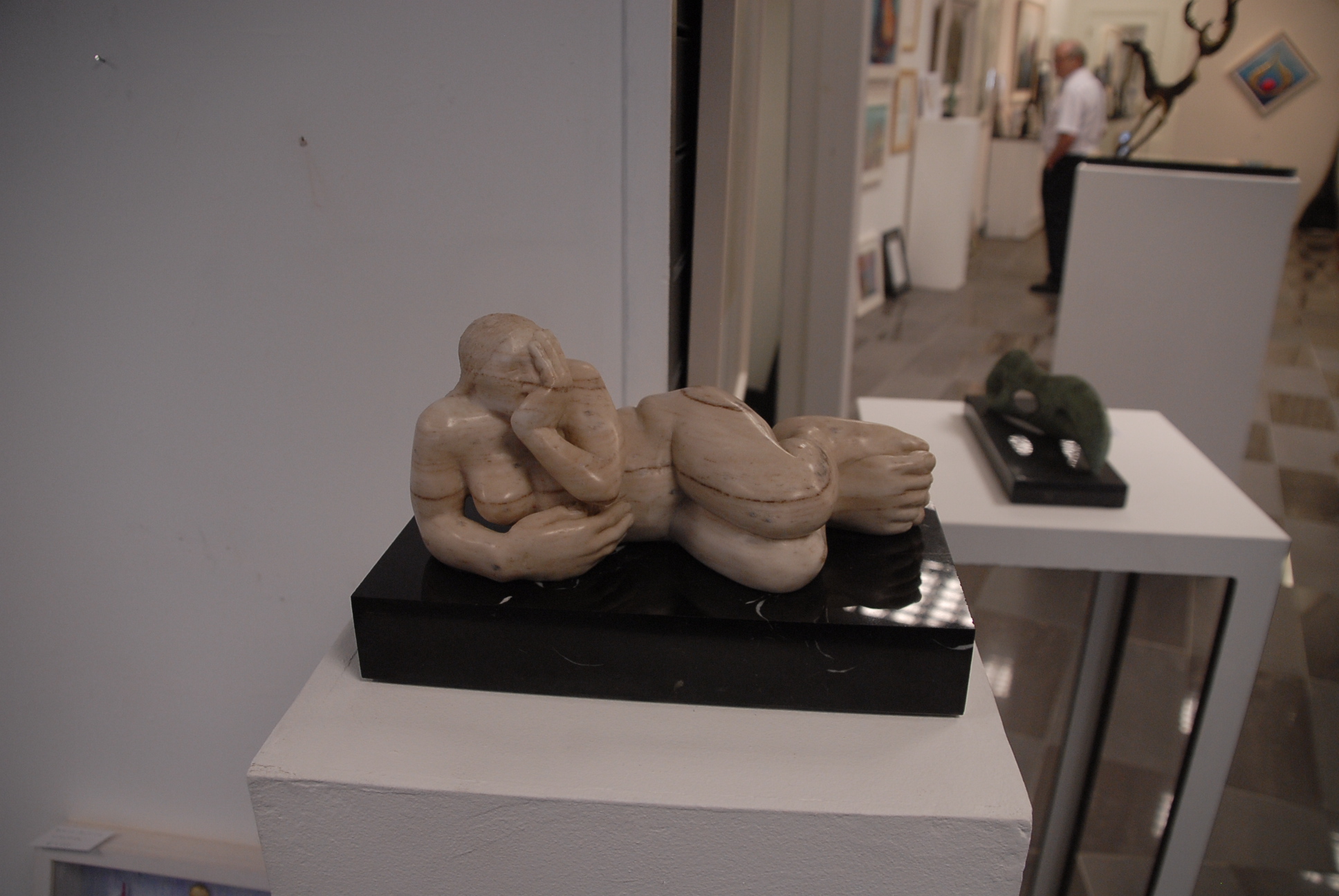 I think our life experience pushes and pulls us from one place to another; it doesn’t immediately influence my work. I think life’s influence is more subconscious. Ideas take time to filter through. Mostly my inspiration comes from a chance encounter or a glimpse of the unusual in the everyday. There are, however, two things that clearly stand out as a push in a certain direction. Firstly, an exhibition, in my 3rd year of art school. Michael Quane a well-known Irish sculptor had a solo exhibition in a gallery beside the art school. He works in stone. He also went to the same art school as I did 15 years previous. I was amazed by the sculpture. I visited the exhibition several times. More importantly, he was a living Irish figure sculptor, working in my local area. Becoming a professional artist went from dream to a real possibility. A more recent influence inspired a full exhibition in 2015. In fact, I am still making pieces inspired by two books I read in 2014. The first book was “Shake Hands With the Devil: The Failure of Humanity in Uganda,” by Lieutenant-General Roméo Dallaire. The second was “Whistleblower, Soldier, Spy: A Journey into the Dark Heart of the Global War on Terror,” by Tom Clonan. These books had a common theme: war. One book highlighted the specific horrors of war, the other that we as a species were constantly at war, conflict, rebellion, etc. This will be a recurring theme.
I think our life experience pushes and pulls us from one place to another; it doesn’t immediately influence my work. I think life’s influence is more subconscious. Ideas take time to filter through. Mostly my inspiration comes from a chance encounter or a glimpse of the unusual in the everyday. There are, however, two things that clearly stand out as a push in a certain direction. Firstly, an exhibition, in my 3rd year of art school. Michael Quane a well-known Irish sculptor had a solo exhibition in a gallery beside the art school. He works in stone. He also went to the same art school as I did 15 years previous. I was amazed by the sculpture. I visited the exhibition several times. More importantly, he was a living Irish figure sculptor, working in my local area. Becoming a professional artist went from dream to a real possibility. A more recent influence inspired a full exhibition in 2015. In fact, I am still making pieces inspired by two books I read in 2014. The first book was “Shake Hands With the Devil: The Failure of Humanity in Uganda,” by Lieutenant-General Roméo Dallaire. The second was “Whistleblower, Soldier, Spy: A Journey into the Dark Heart of the Global War on Terror,” by Tom Clonan. These books had a common theme: war. One book highlighted the specific horrors of war, the other that we as a species were constantly at war, conflict, rebellion, etc. This will be a recurring theme.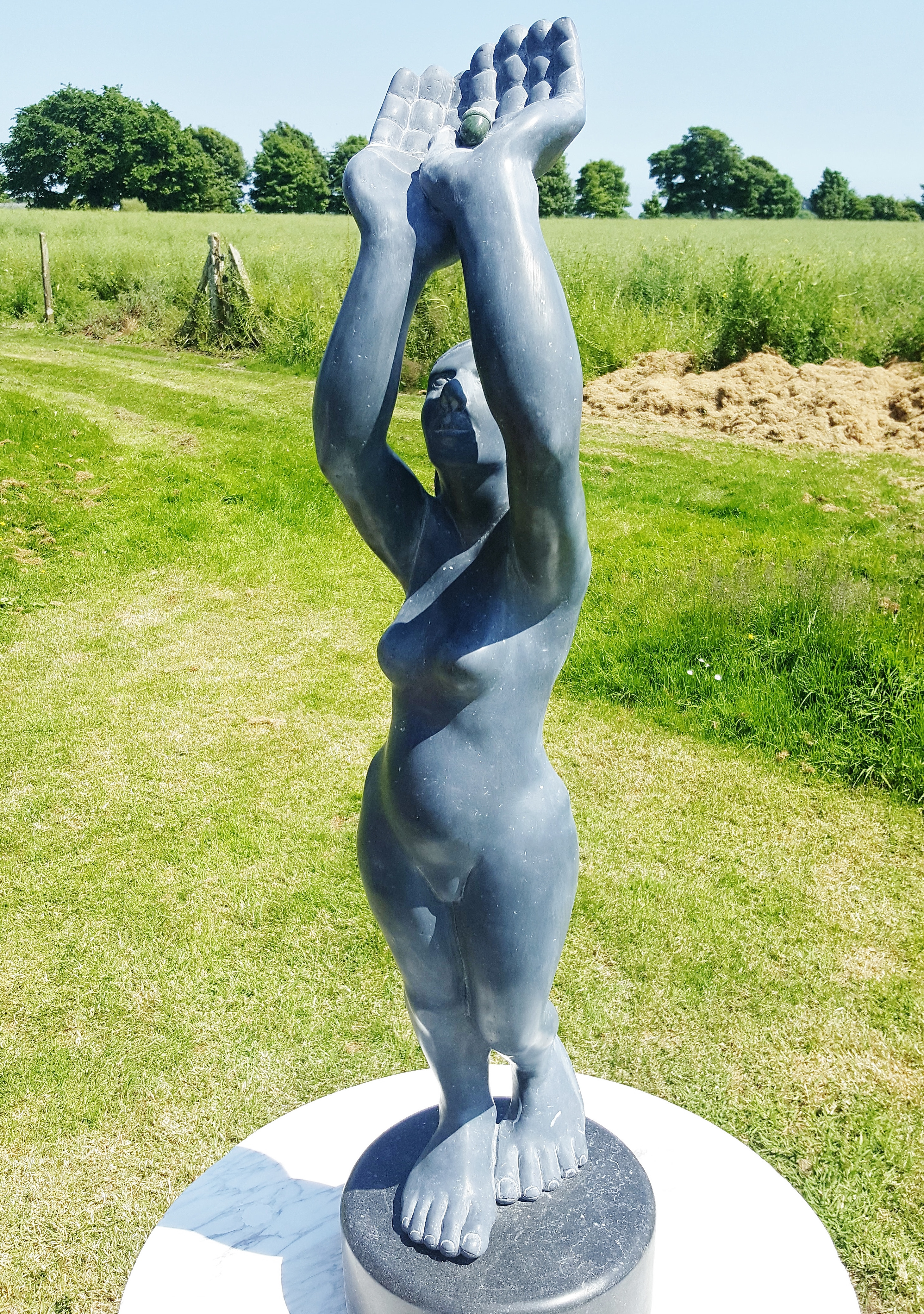
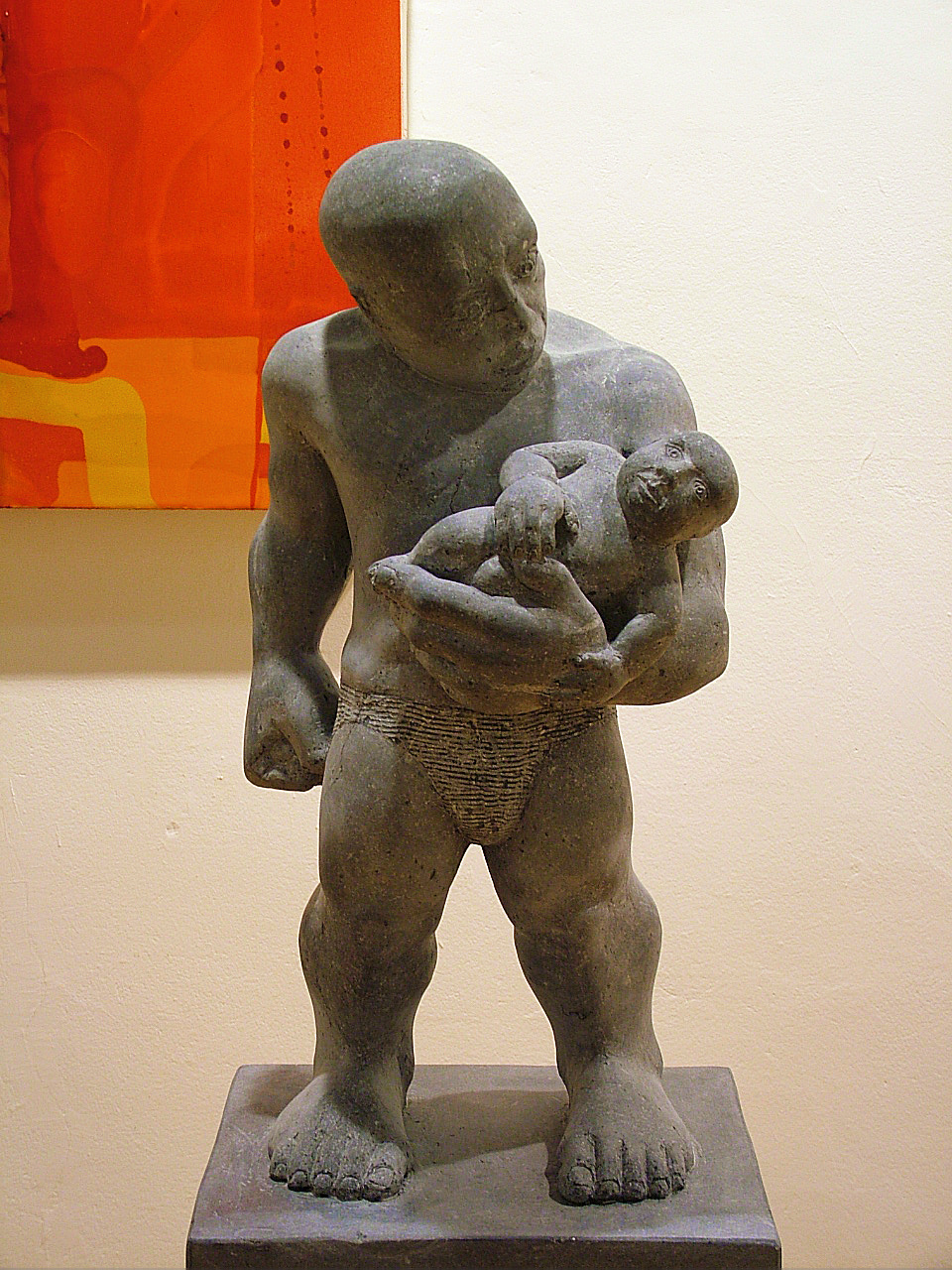 I make expressive, figurative, sculpture. I exaggerate the proportion of the figure, large hands and feet usually. This started almost by accident but grew into a style and useful compositional tool. Adding weight to an area or focusing the attention on a certain section. I use negative space, to ensure a sculpture inhabits rather than invades the space it’s in. To be able to see through the stone helps make the stone feel malleable. I have heard my sculptures described as sketches in marble. I want the work to have potential energy, not be too refined. As a result I think my work borders on an unfinished look sometimes. I don’t like to high polish everything and refine it to infinity. When I decide a piece is finished, it can feel arbitrary, but I tell myself it’s a subconscious experience. I see a block of stone as 100% potential, each time the chisel hits the stone I remove some of the potential, I go further down a path to a specific destination. Eventually I pass the point of no return, where the form is there, but very rough. After this point I am refining the shape. Too little work and the piece looks unfinished. Too much and it can look flat and even lifeless. I want to express myself with every sculpture. I am not sure I have an overall expressive goal, at least not a permanent one. The most consistent aim I have is honesty. To be making sculpture for me, because I love to do it. I think this is at the core of all art, the art I admire and aspire to, at least.
I make expressive, figurative, sculpture. I exaggerate the proportion of the figure, large hands and feet usually. This started almost by accident but grew into a style and useful compositional tool. Adding weight to an area or focusing the attention on a certain section. I use negative space, to ensure a sculpture inhabits rather than invades the space it’s in. To be able to see through the stone helps make the stone feel malleable. I have heard my sculptures described as sketches in marble. I want the work to have potential energy, not be too refined. As a result I think my work borders on an unfinished look sometimes. I don’t like to high polish everything and refine it to infinity. When I decide a piece is finished, it can feel arbitrary, but I tell myself it’s a subconscious experience. I see a block of stone as 100% potential, each time the chisel hits the stone I remove some of the potential, I go further down a path to a specific destination. Eventually I pass the point of no return, where the form is there, but very rough. After this point I am refining the shape. Too little work and the piece looks unfinished. Too much and it can look flat and even lifeless. I want to express myself with every sculpture. I am not sure I have an overall expressive goal, at least not a permanent one. The most consistent aim I have is honesty. To be making sculpture for me, because I love to do it. I think this is at the core of all art, the art I admire and aspire to, at least. 
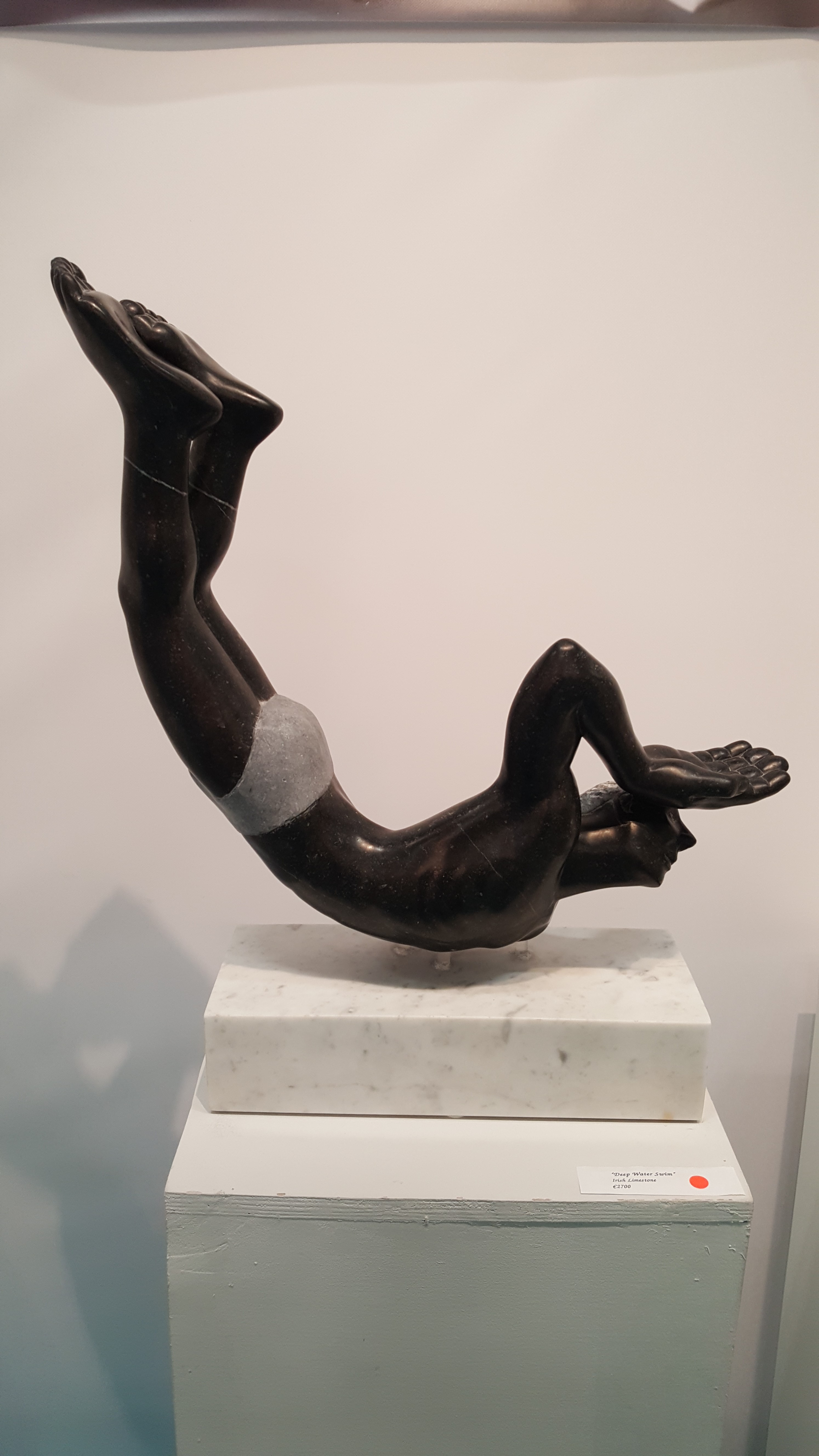
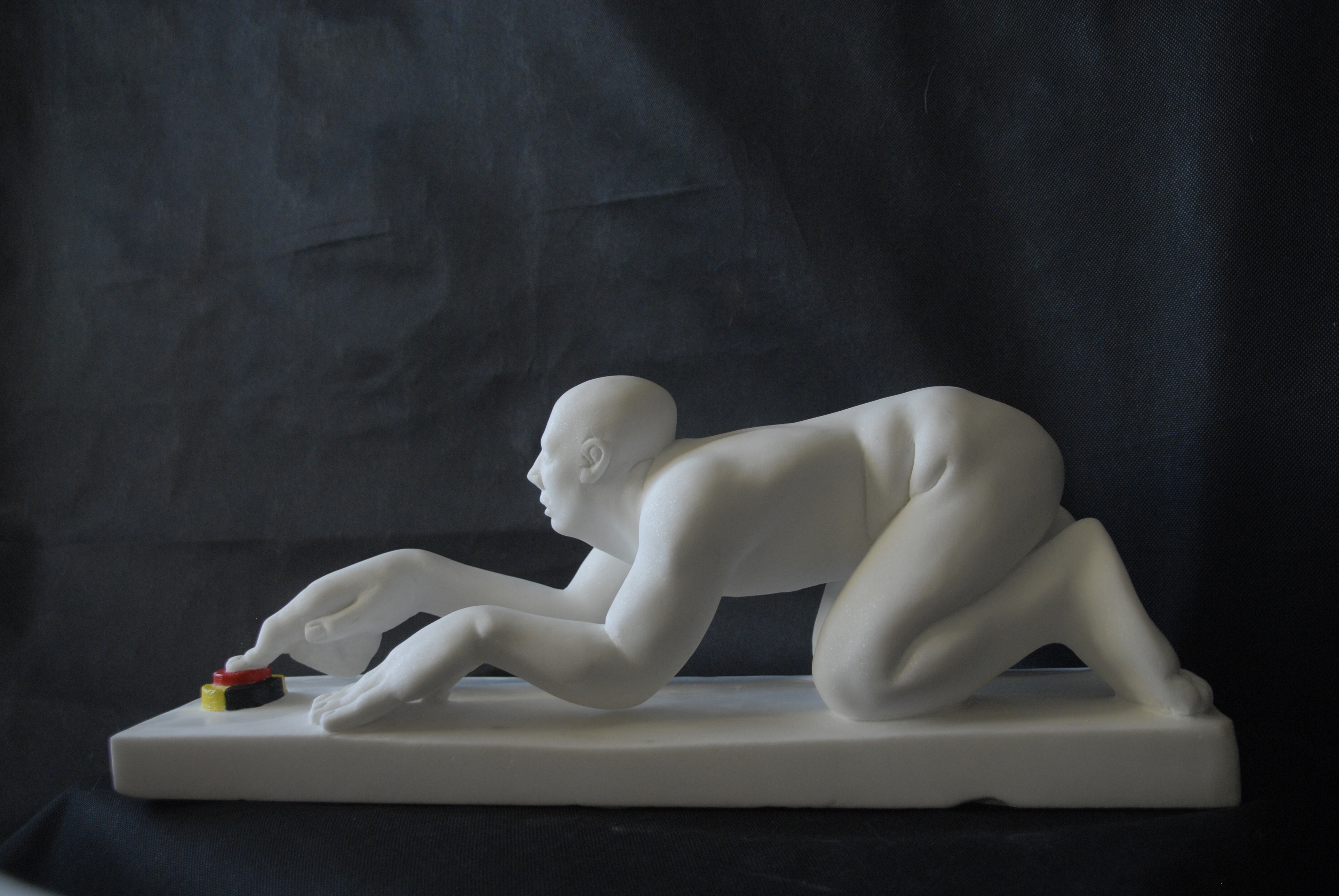
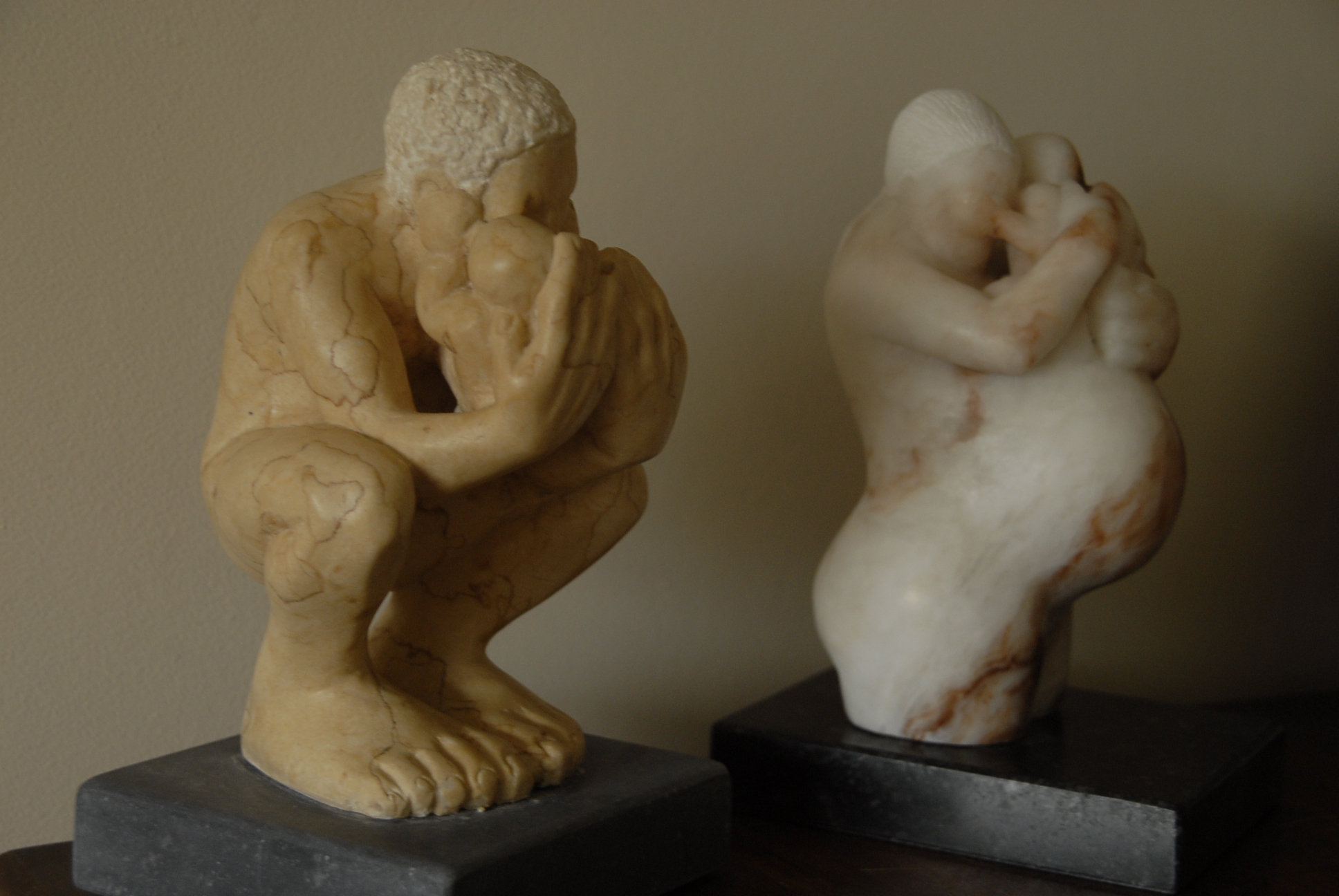
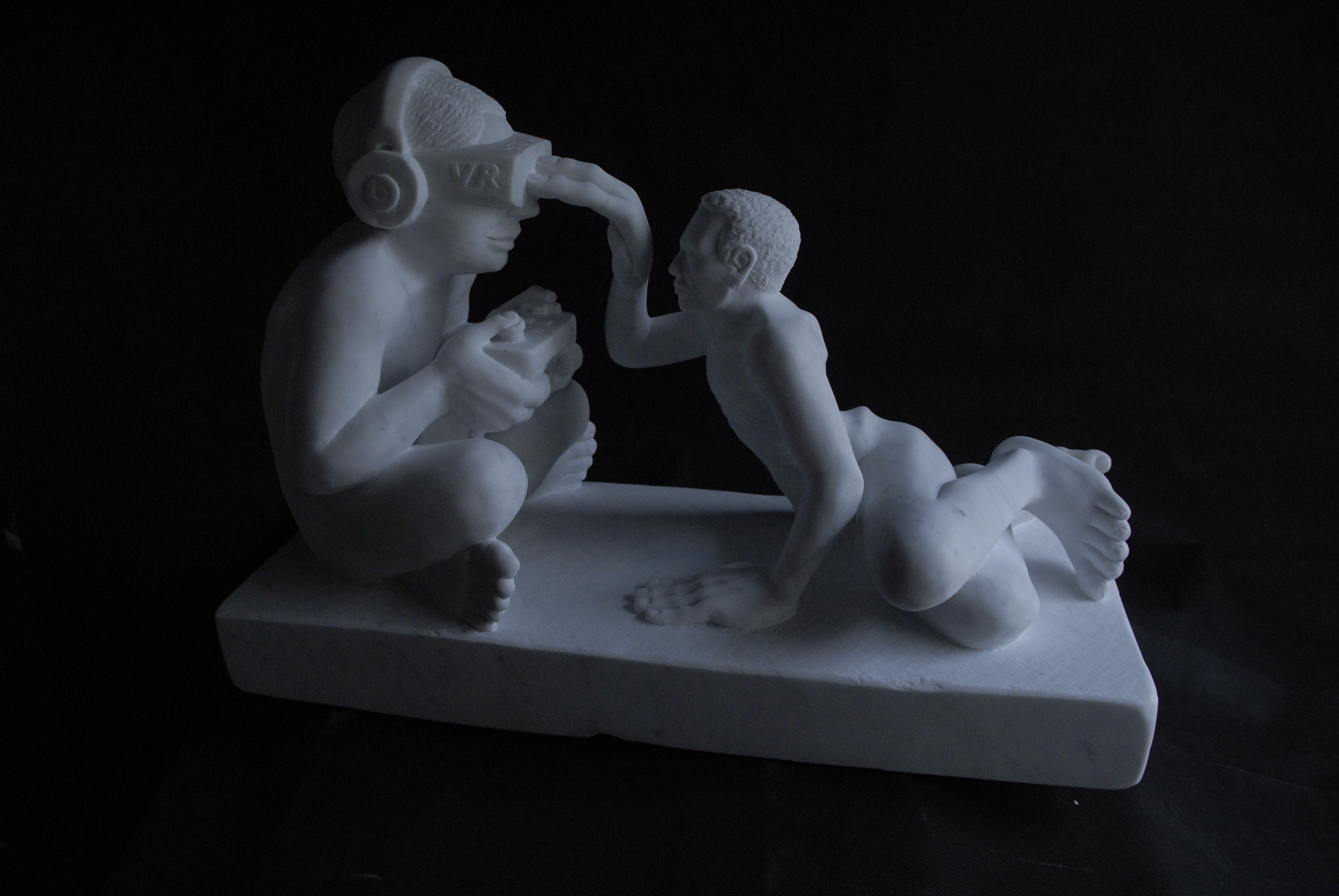 I made a sculpture called “The Mighty Oak” from Kilkenny marble (a darker variant of Irish limestone). This piece was a female figure holding a jade acorn. I left the stone honed in this case, suitable for outdoors. I also used a round base which helped with the circular flow of movement. Both “Icarus” and “The Mighty Oak” are based around compositional challenges and simple beauty. In contrast, an ongoing theme of warfare (anti-war,) has preoccupied me since 2014. “Game Over, Generation Alpha” is an Italian marble sculpture of a male figure sitting on a predator drone flying it via games console. This was one of six pieces in an exhibition called “Behold Man: Apes with Guns.” Each piece dealt with a different aspect of modern warfare. Spending seven or eight months thinking about war and its effect on society was a real drain. Although I designed a couple more pieces after the exhibition in late 2015 it is only now I am starting to make them.
I made a sculpture called “The Mighty Oak” from Kilkenny marble (a darker variant of Irish limestone). This piece was a female figure holding a jade acorn. I left the stone honed in this case, suitable for outdoors. I also used a round base which helped with the circular flow of movement. Both “Icarus” and “The Mighty Oak” are based around compositional challenges and simple beauty. In contrast, an ongoing theme of warfare (anti-war,) has preoccupied me since 2014. “Game Over, Generation Alpha” is an Italian marble sculpture of a male figure sitting on a predator drone flying it via games console. This was one of six pieces in an exhibition called “Behold Man: Apes with Guns.” Each piece dealt with a different aspect of modern warfare. Spending seven or eight months thinking about war and its effect on society was a real drain. Although I designed a couple more pieces after the exhibition in late 2015 it is only now I am starting to make them.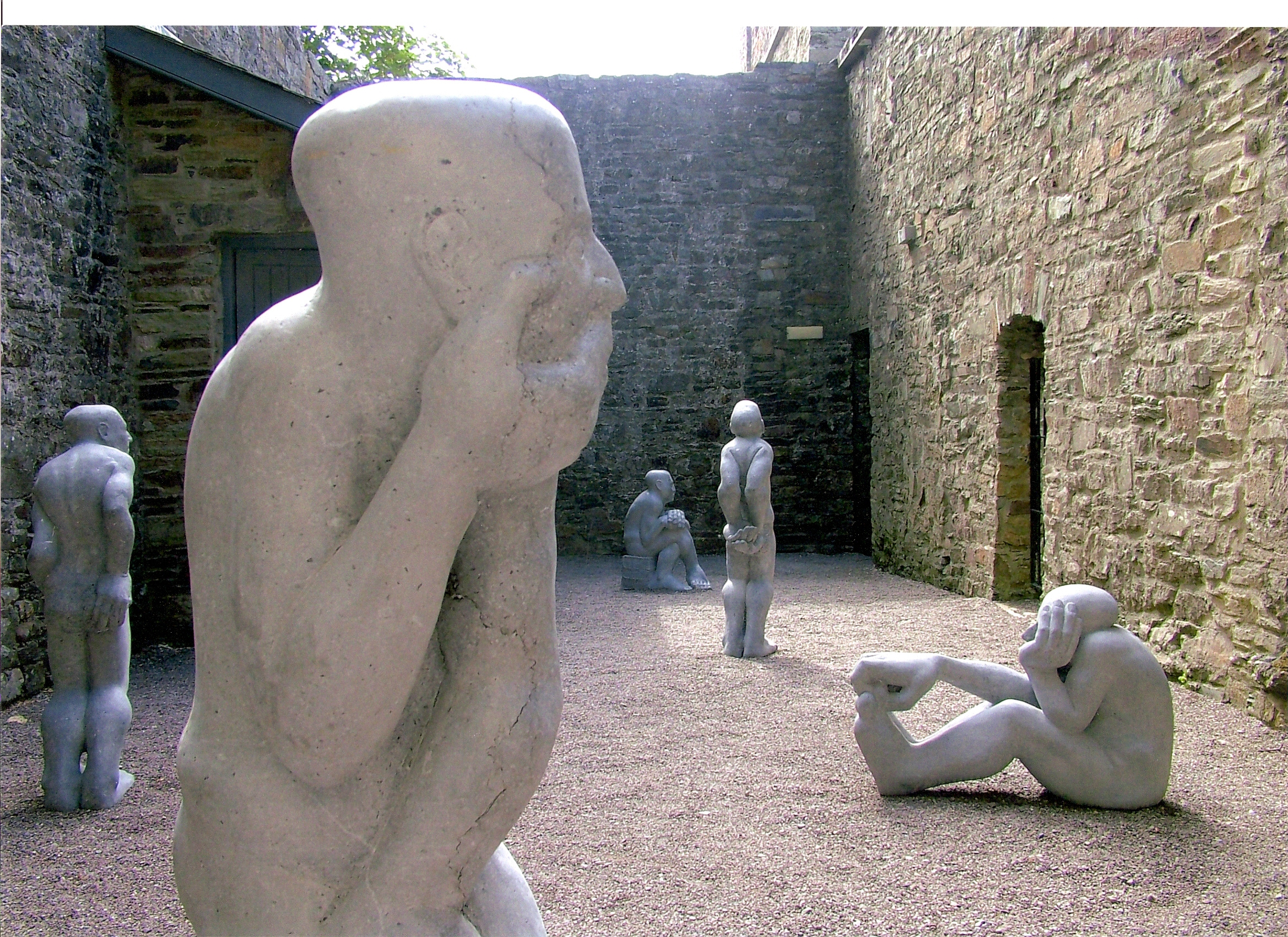 I organize sculpture exhibitions to promote 3-D art in Ireland, in doing so I have exhibited with many people who inspired and encouraged me early in my career. I have also managed to swap art works with some exceptional artists too! The social aspect of these exhibitions is important to me. I joined NWSSA at the first Camp Pilgrim Firs. Surrounded by stone, and enthusiastic carvers, I had the time of my life and met some great carvers and new friends; also new carvers and great friends. The experience helped me remember that stone is fun. That the joy of stone carving is why I use stone over any other medium. To continuously learn as I work is part of what drives me. Joining NWSSA at Pilgrim Firs reminded me there are many techniques to be learned from the honed masters or the beginner with vigorous energy and fresh eyes. I felt the welcome of the group. I felt at home, united by a passion for stone sculpting. I look forward to seeing my NWSSA friends again soon!
I organize sculpture exhibitions to promote 3-D art in Ireland, in doing so I have exhibited with many people who inspired and encouraged me early in my career. I have also managed to swap art works with some exceptional artists too! The social aspect of these exhibitions is important to me. I joined NWSSA at the first Camp Pilgrim Firs. Surrounded by stone, and enthusiastic carvers, I had the time of my life and met some great carvers and new friends; also new carvers and great friends. The experience helped me remember that stone is fun. That the joy of stone carving is why I use stone over any other medium. To continuously learn as I work is part of what drives me. Joining NWSSA at Pilgrim Firs reminded me there are many techniques to be learned from the honed masters or the beginner with vigorous energy and fresh eyes. I felt the welcome of the group. I felt at home, united by a passion for stone sculpting. I look forward to seeing my NWSSA friends again soon!
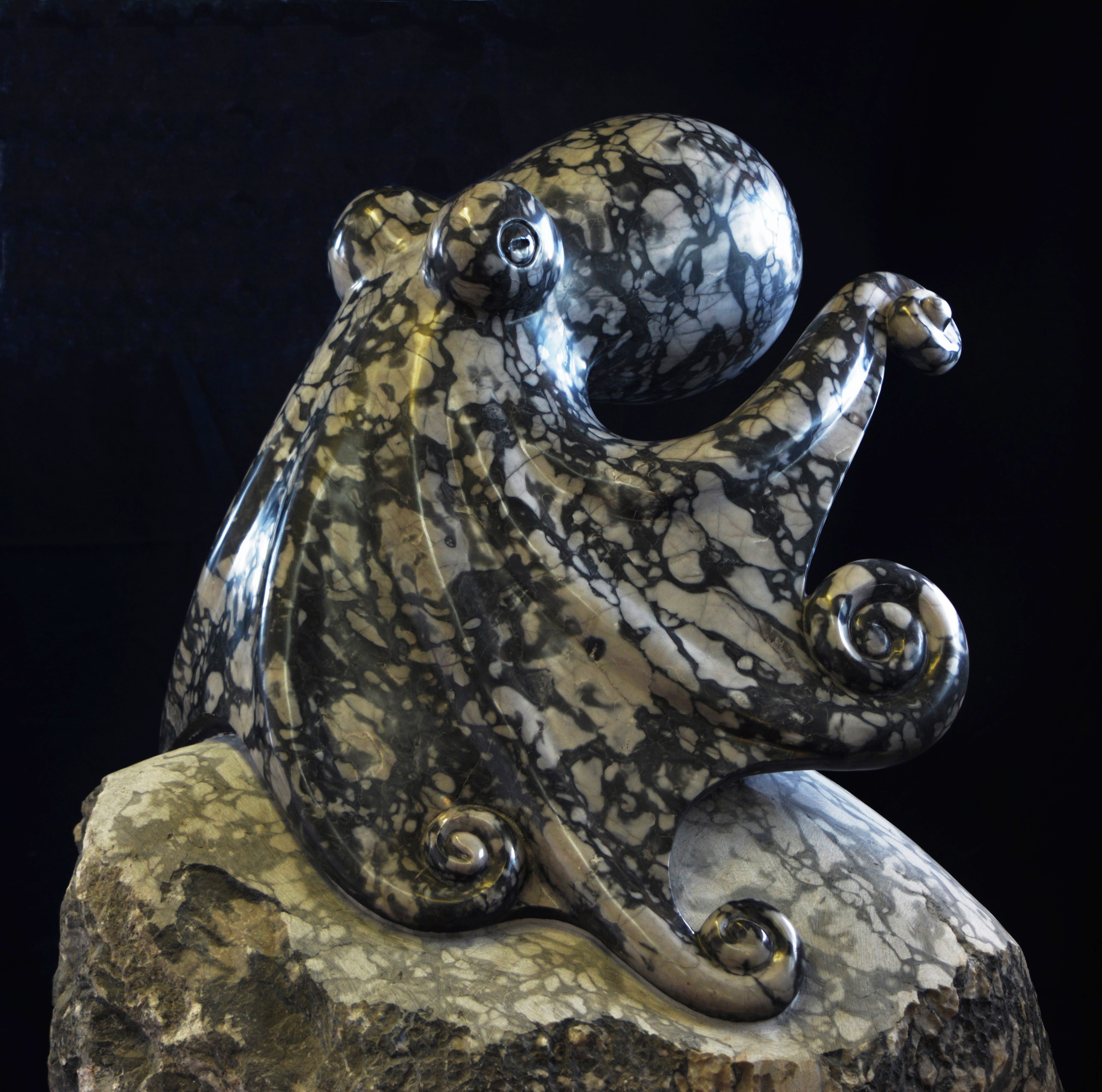 At the same time, my brother and his wife were living at my parents’ home before moving to a place up north. During this time, I started to sit out in the garage and carve soapstone with Sandy. We would just talk about everything and sculptures would be carved. After I had made about twelve sculptures, he asked if I wanted to go to the Ottawa Christmas show with him; that was 1985. At the show, I sold six and made about $1,000. Good for an unemployed film graduate in the 1980s.
At the same time, my brother and his wife were living at my parents’ home before moving to a place up north. During this time, I started to sit out in the garage and carve soapstone with Sandy. We would just talk about everything and sculptures would be carved. After I had made about twelve sculptures, he asked if I wanted to go to the Ottawa Christmas show with him; that was 1985. At the show, I sold six and made about $1,000. Good for an unemployed film graduate in the 1980s. 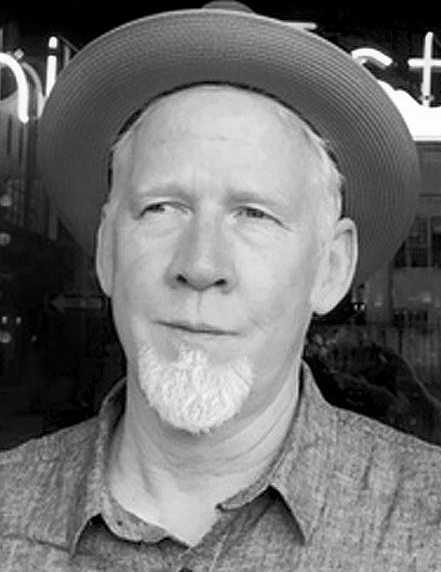
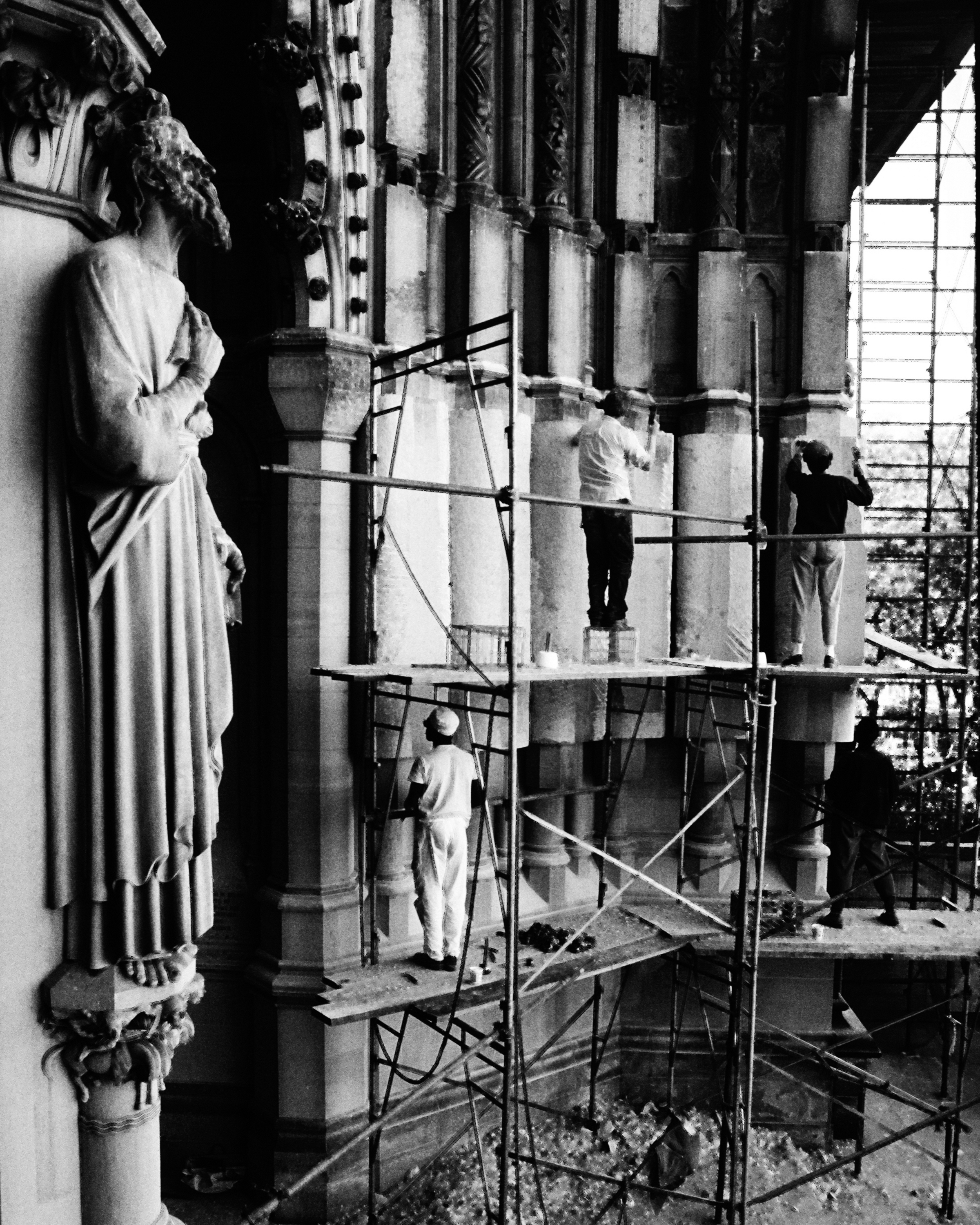 As cathedrals go, this mammoth edifice is a 19th century show of American might. It’s a cathedral to beat all cathedrals… in size, anyway. The interior floor is two football fields in length. The ceiling height is 120 ft. at its highest and with massive granite walls sheathed in a thick skin of limestone. The place is dirty, dank and cold just like the city it sits in, and I loved it instantly. I had never seen such grand architecture. There was nothing timid in the construction of this building. I was immediately struck by how the roaring city outside is silenced upon entry.
As cathedrals go, this mammoth edifice is a 19th century show of American might. It’s a cathedral to beat all cathedrals… in size, anyway. The interior floor is two football fields in length. The ceiling height is 120 ft. at its highest and with massive granite walls sheathed in a thick skin of limestone. The place is dirty, dank and cold just like the city it sits in, and I loved it instantly. I had never seen such grand architecture. There was nothing timid in the construction of this building. I was immediately struck by how the roaring city outside is silenced upon entry.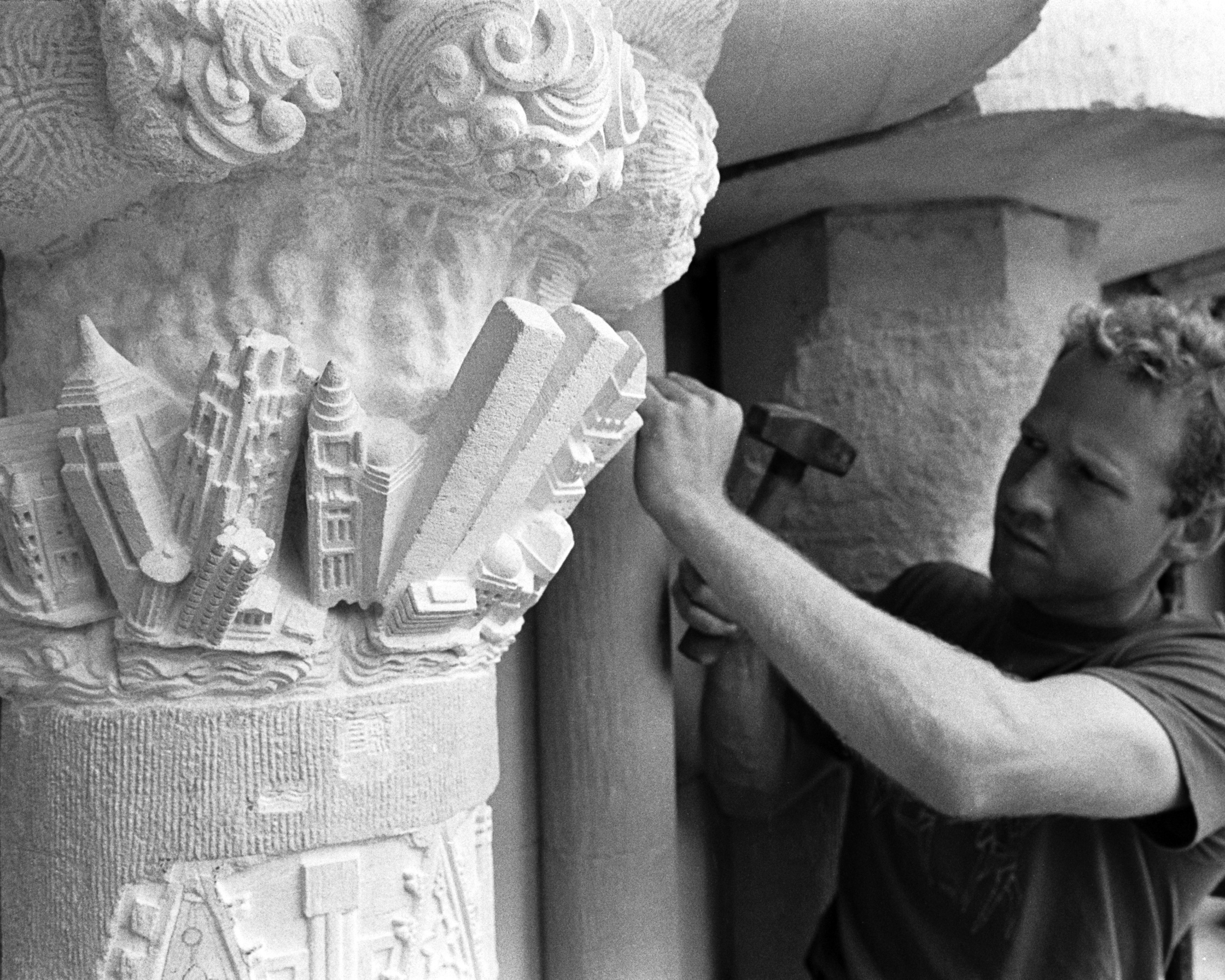
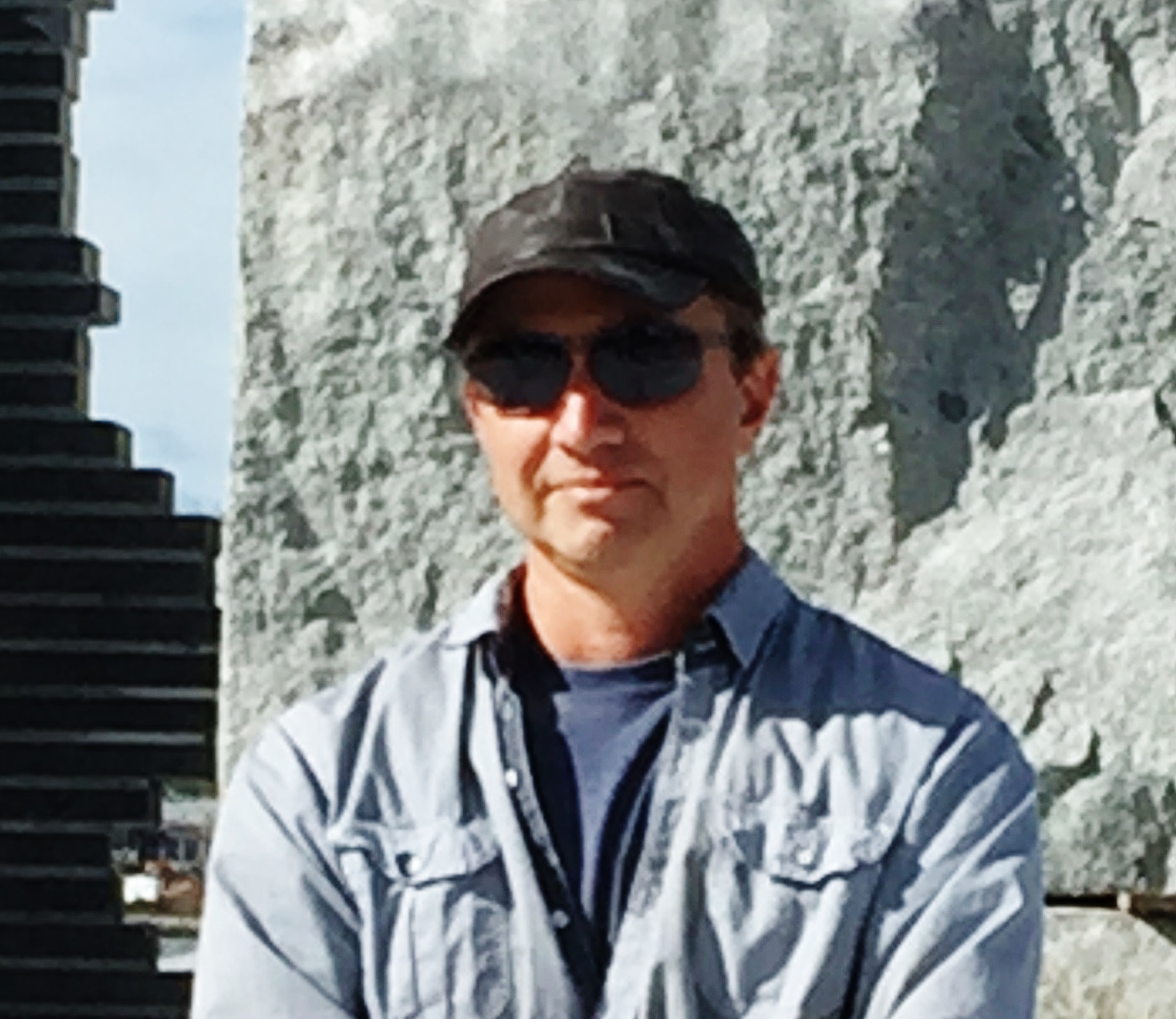
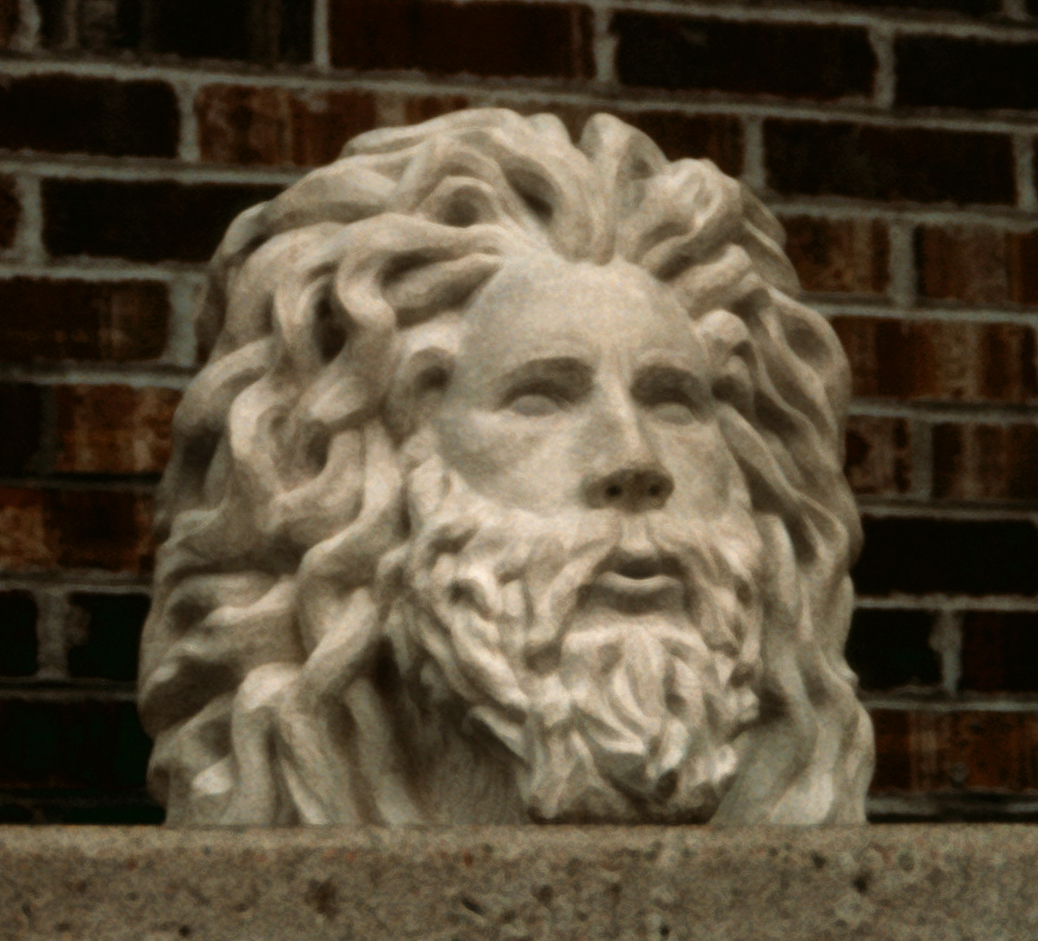
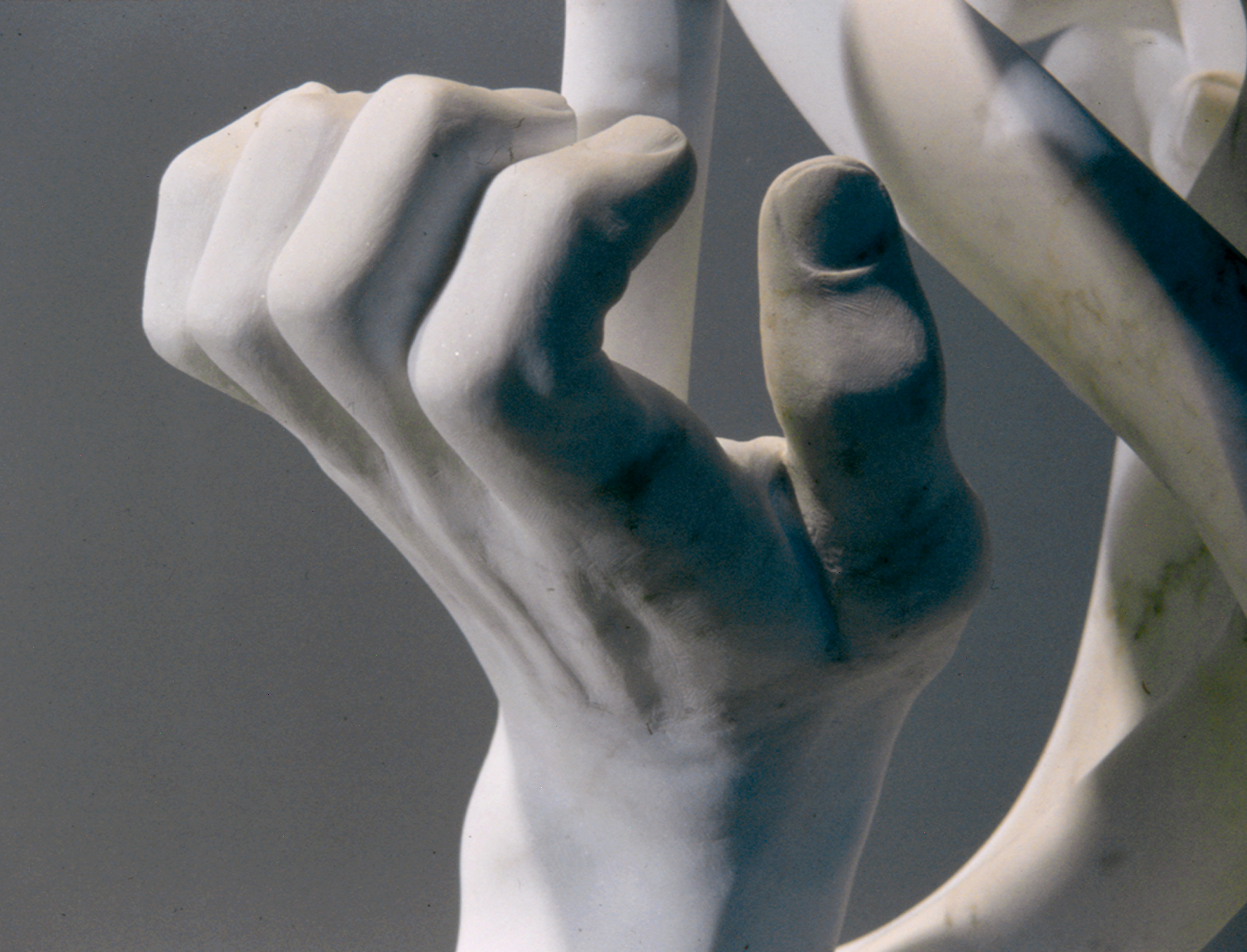
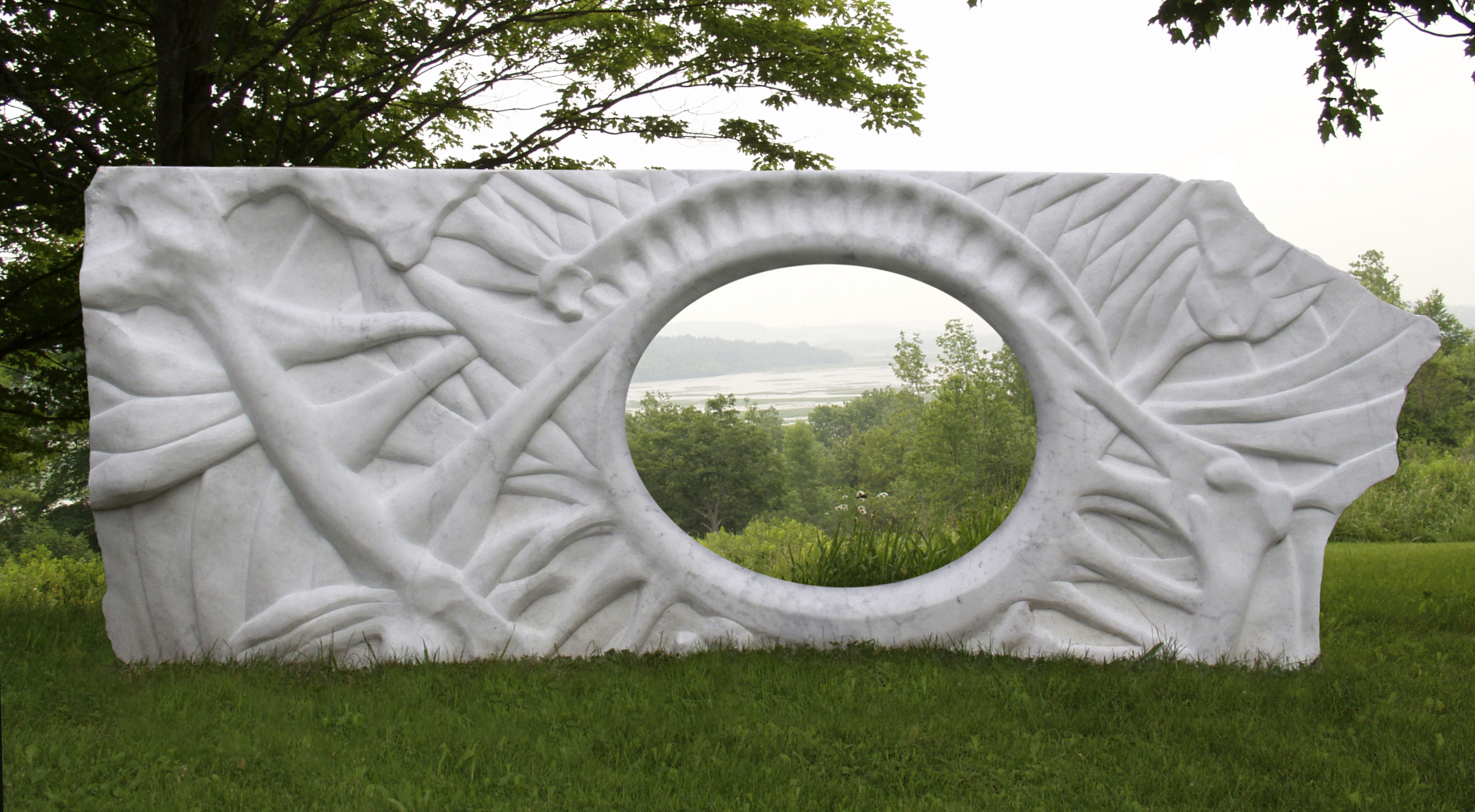 “Inner View” Marble. 2001 104”x42”x10’
“Inner View” Marble. 2001 104”x42”x10’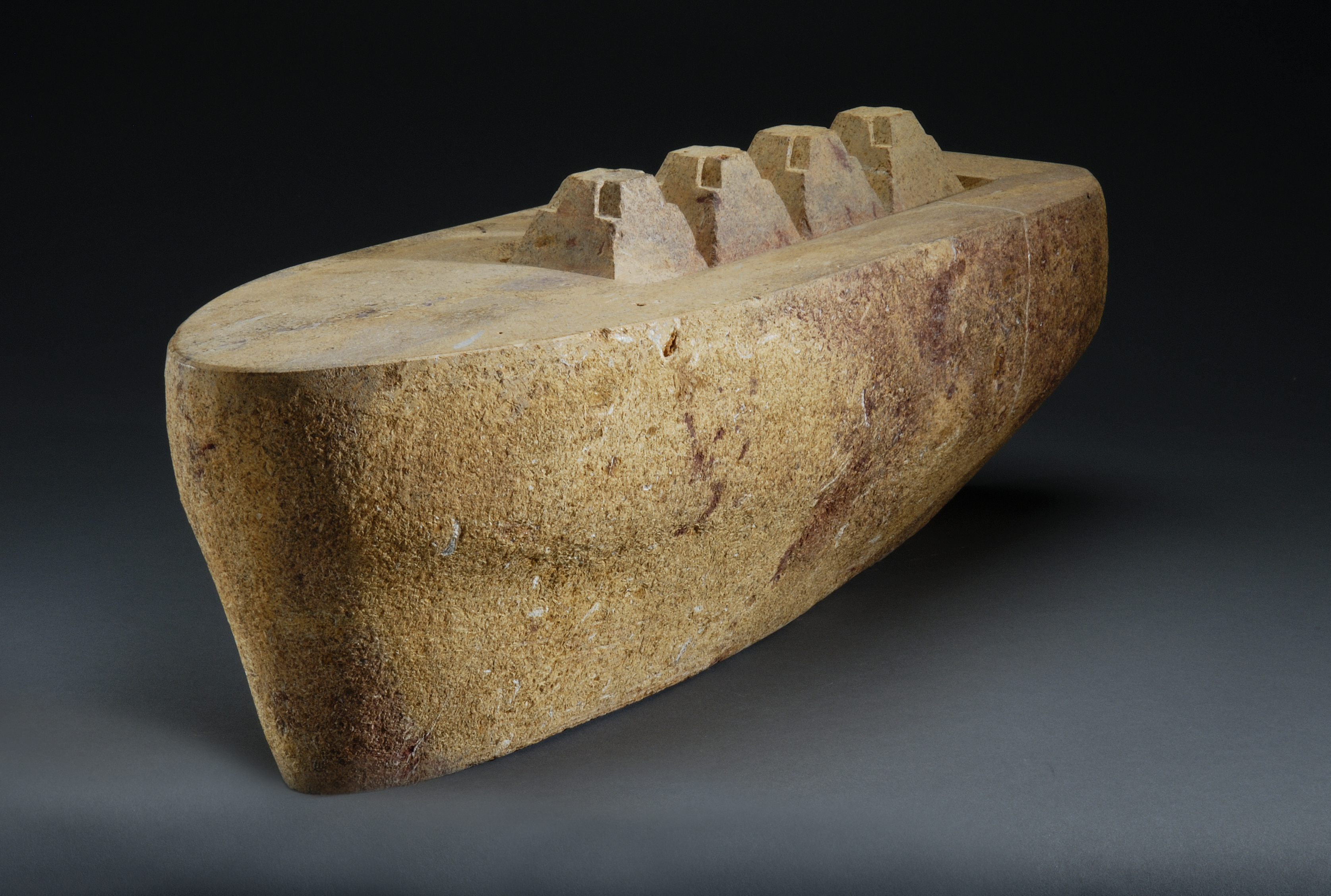
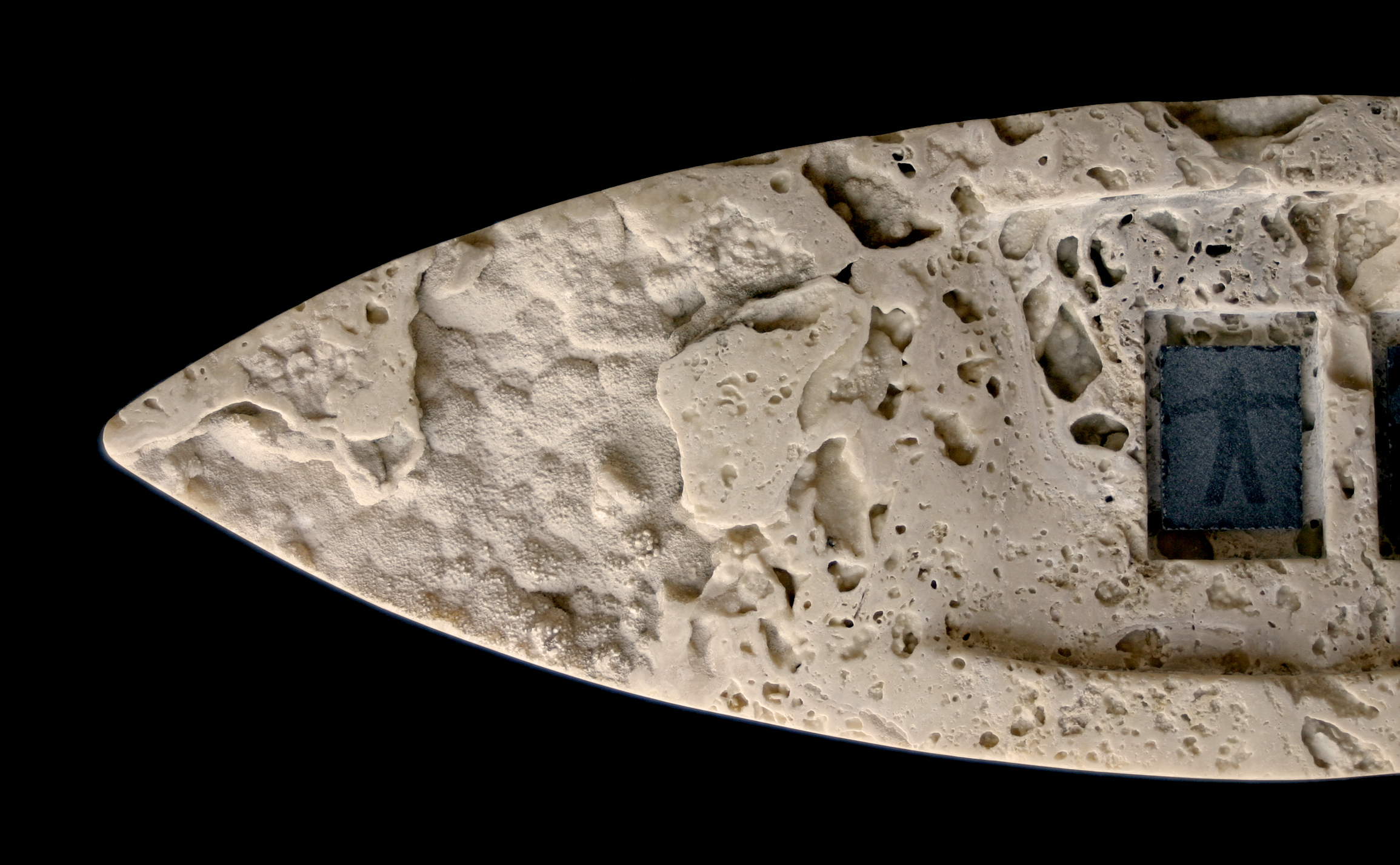
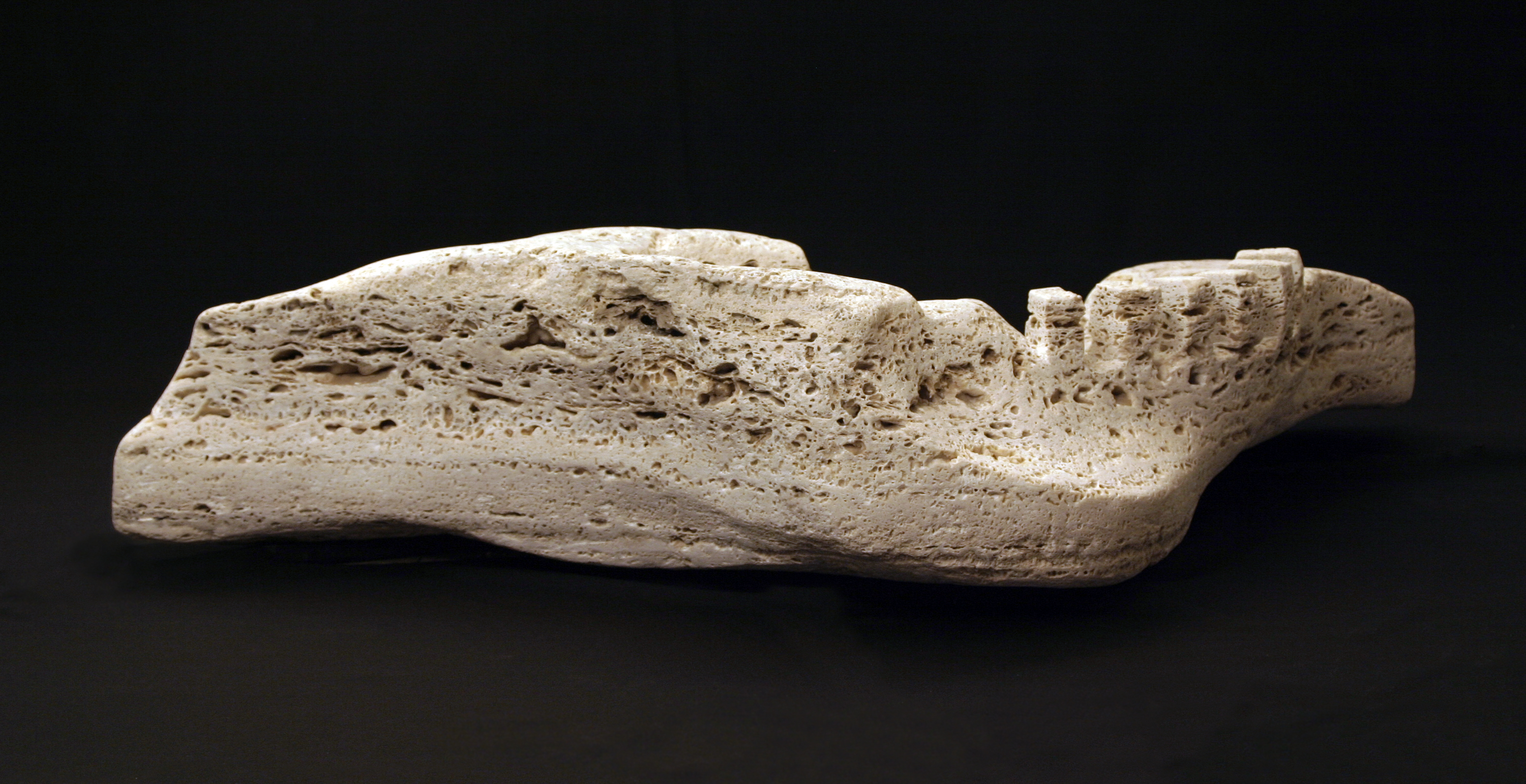
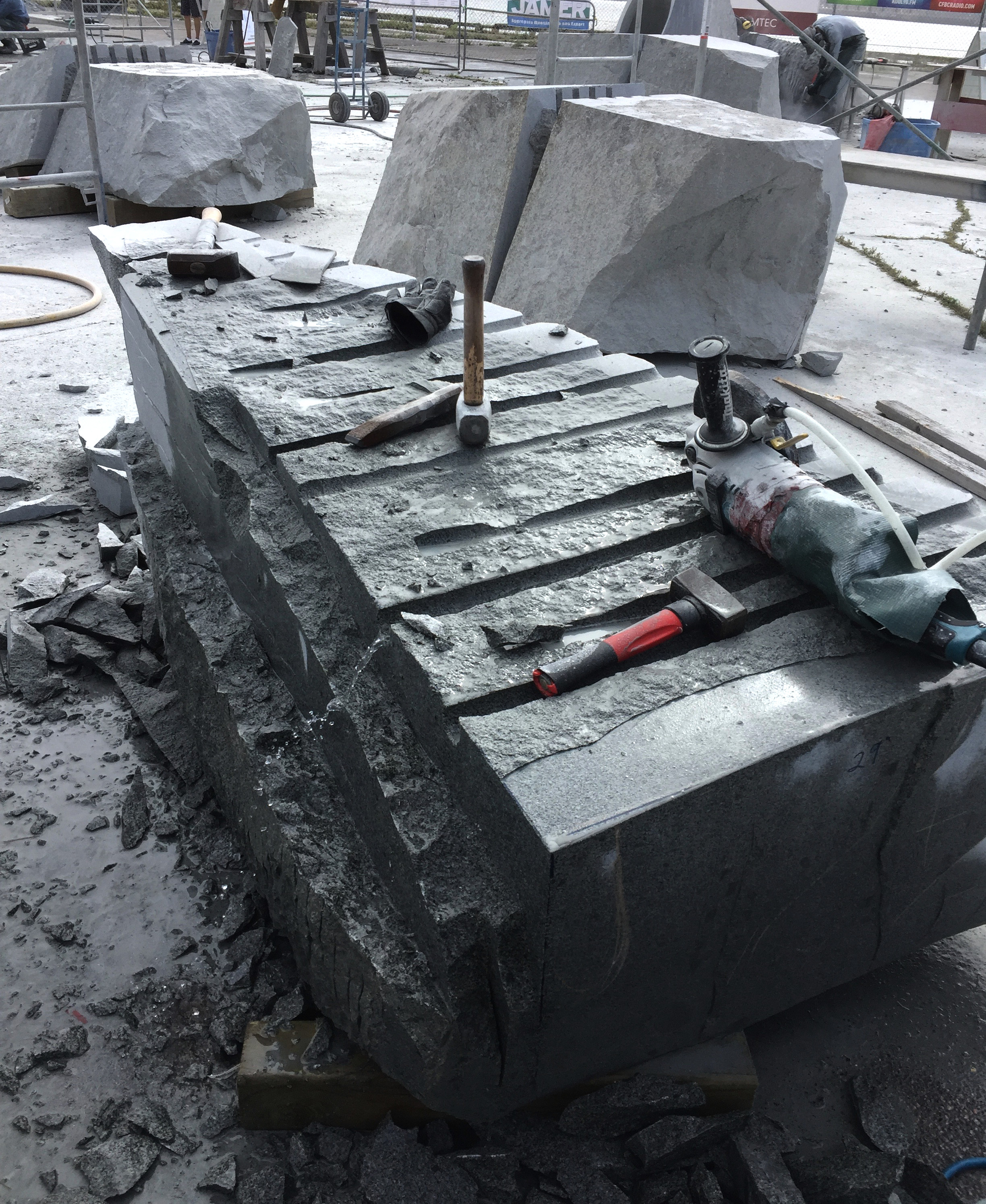 It was a great experience to attend the Saint John International Sculpture Symposium this past summer for six weeks. Working alongside seven other sculptors to cut through tons of granite, each creating our own vision for a public art piece.
It was a great experience to attend the Saint John International Sculpture Symposium this past summer for six weeks. Working alongside seven other sculptors to cut through tons of granite, each creating our own vision for a public art piece.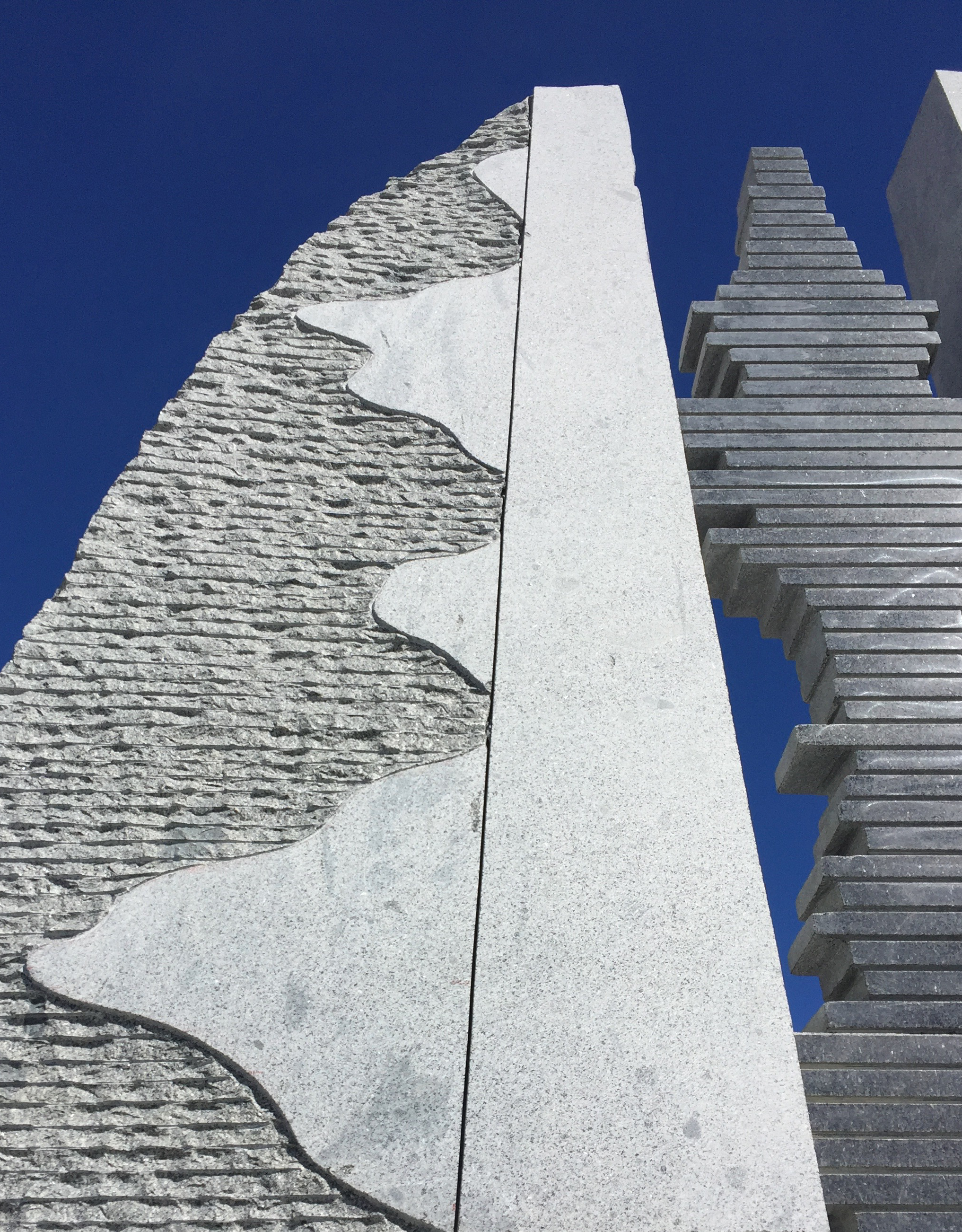
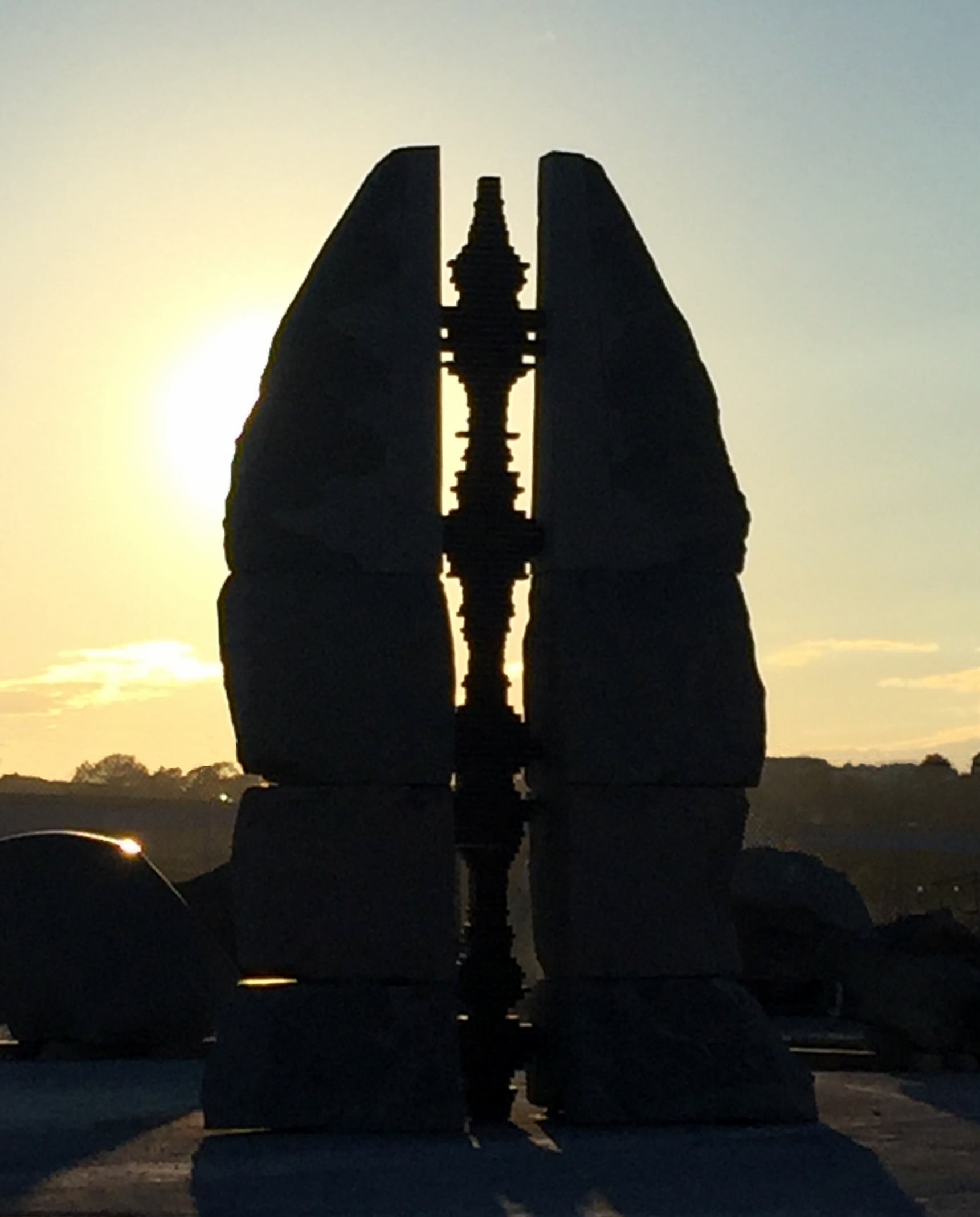 “Song of the Deep” 2018. 13’tall x 8.5’ x 4’
“Song of the Deep” 2018. 13’tall x 8.5’ x 4’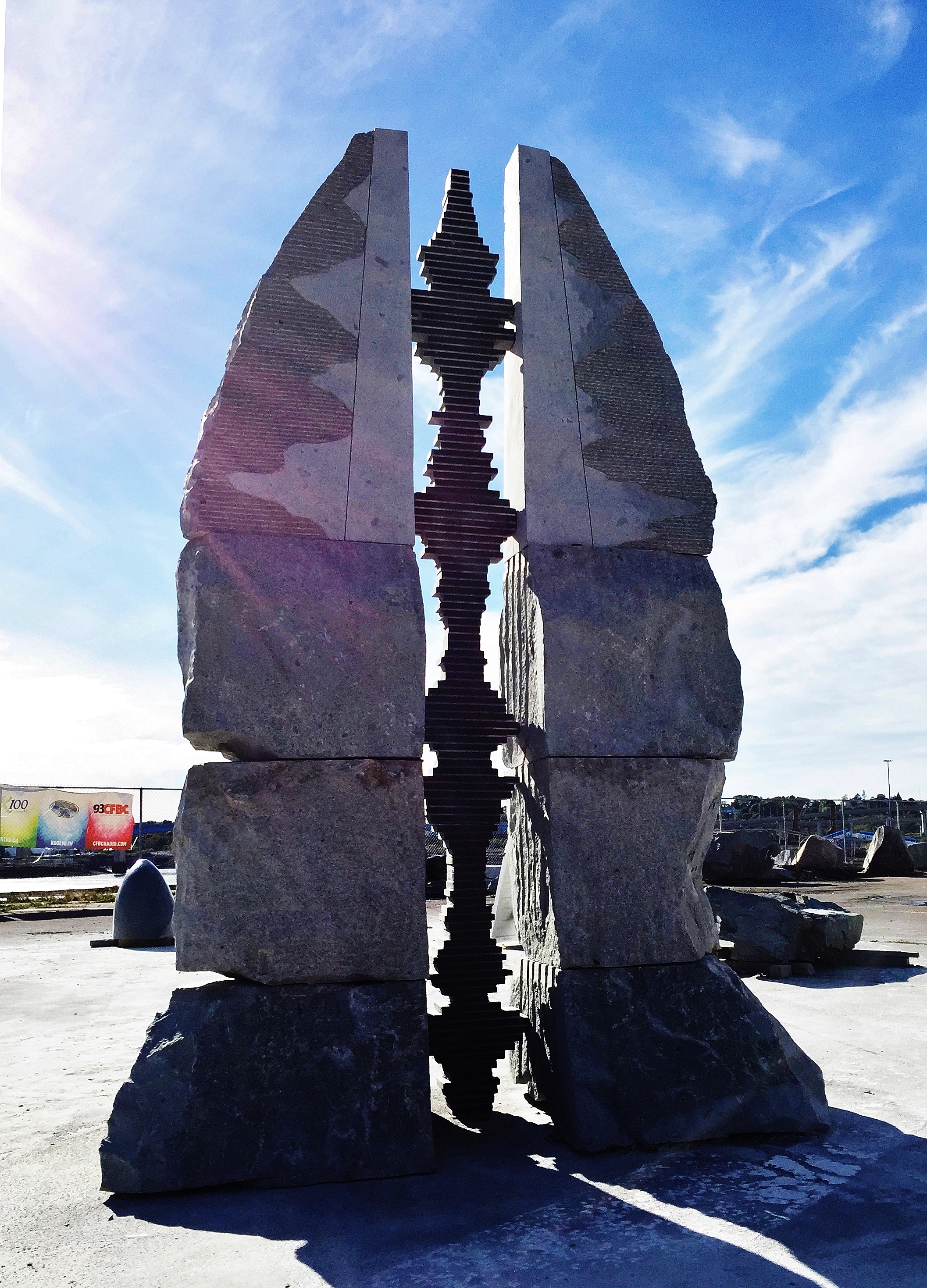
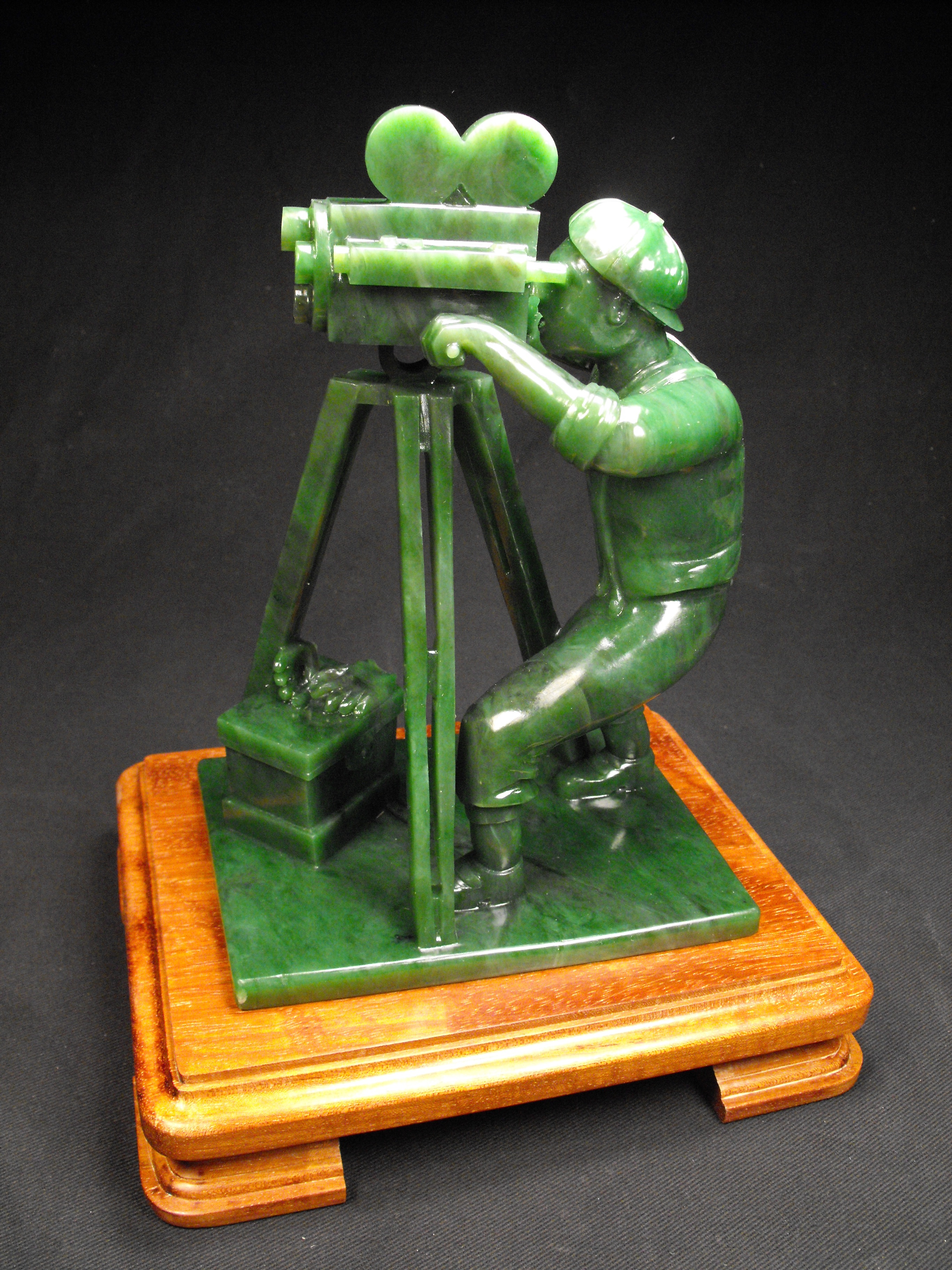 These 73-year-old hands have been carving jade for nearly forty of those years. Nary a penny earned for the effort. Several reasons for that. Mainly the ample financial rewards earned by these hands working on telecommunication electronics and main frame computers dissuaded any thoughts of pursuing a life of starving artist. The attached ten digits remain busy in these twelve years of retirement but as yet still monetarily uncompensated. Though a price was incurred in those forty years. Fortunately that matter was resolved satisfactorily the past year by carpal tunnel release surgery on both wrists.
These 73-year-old hands have been carving jade for nearly forty of those years. Nary a penny earned for the effort. Several reasons for that. Mainly the ample financial rewards earned by these hands working on telecommunication electronics and main frame computers dissuaded any thoughts of pursuing a life of starving artist. The attached ten digits remain busy in these twelve years of retirement but as yet still monetarily uncompensated. Though a price was incurred in those forty years. Fortunately that matter was resolved satisfactorily the past year by carpal tunnel release surgery on both wrists.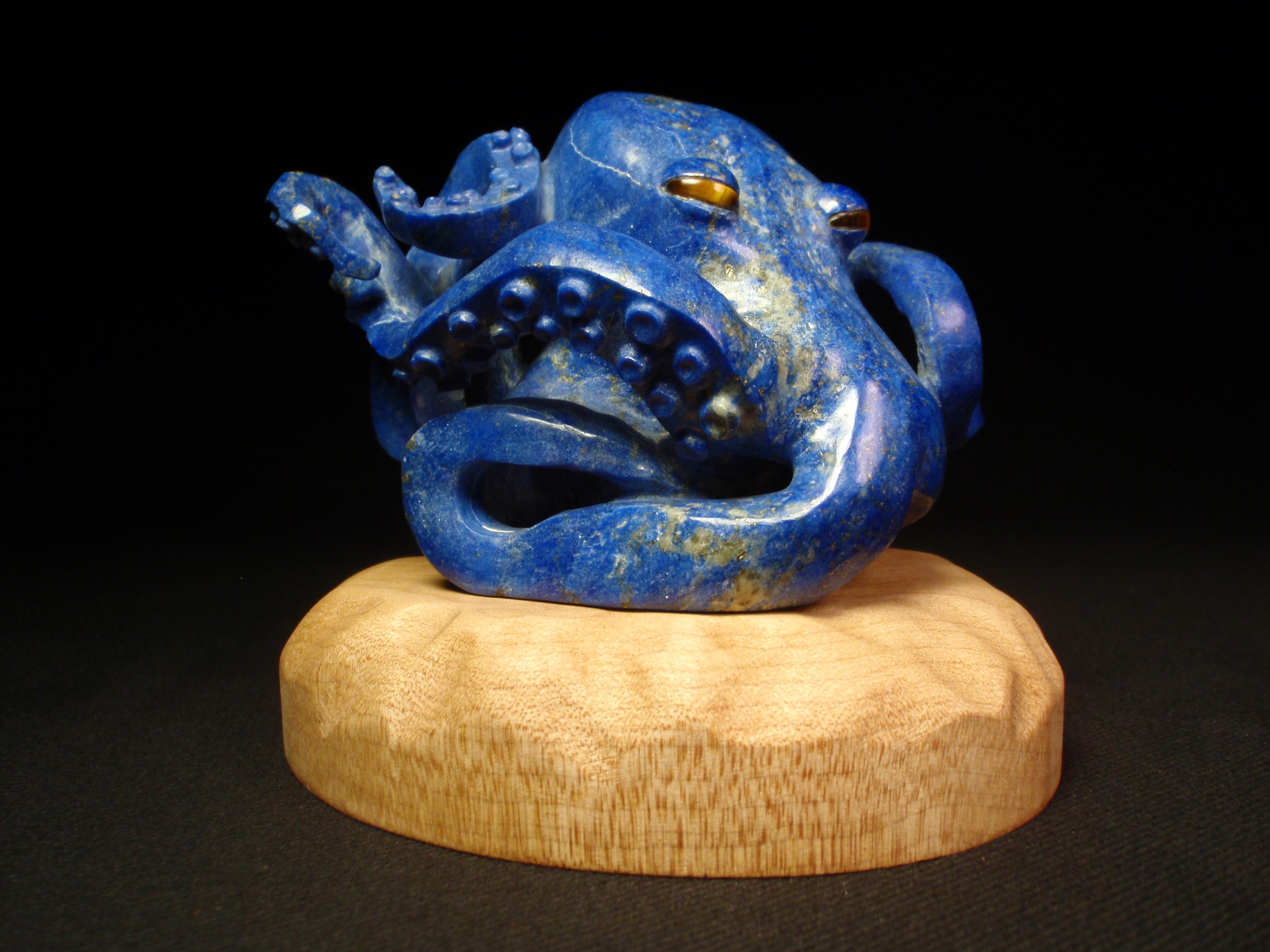 In the early years there was experimentation with any number of gemstone materials. Mostly of the cryptocrystalline quartz varieties. But one day these eyes set upon this unfamiliar green block of stone called jade. Things have never been the same since. Partly owing to acquired skills but appreciably owing to a stone obligingly compliant to often unreasonable expectations this chap in a younger shop apron was catapulted from beginner carver to awarded master in record time. So began a decades long love affair with jade.
In the early years there was experimentation with any number of gemstone materials. Mostly of the cryptocrystalline quartz varieties. But one day these eyes set upon this unfamiliar green block of stone called jade. Things have never been the same since. Partly owing to acquired skills but appreciably owing to a stone obligingly compliant to often unreasonable expectations this chap in a younger shop apron was catapulted from beginner carver to awarded master in record time. So began a decades long love affair with jade.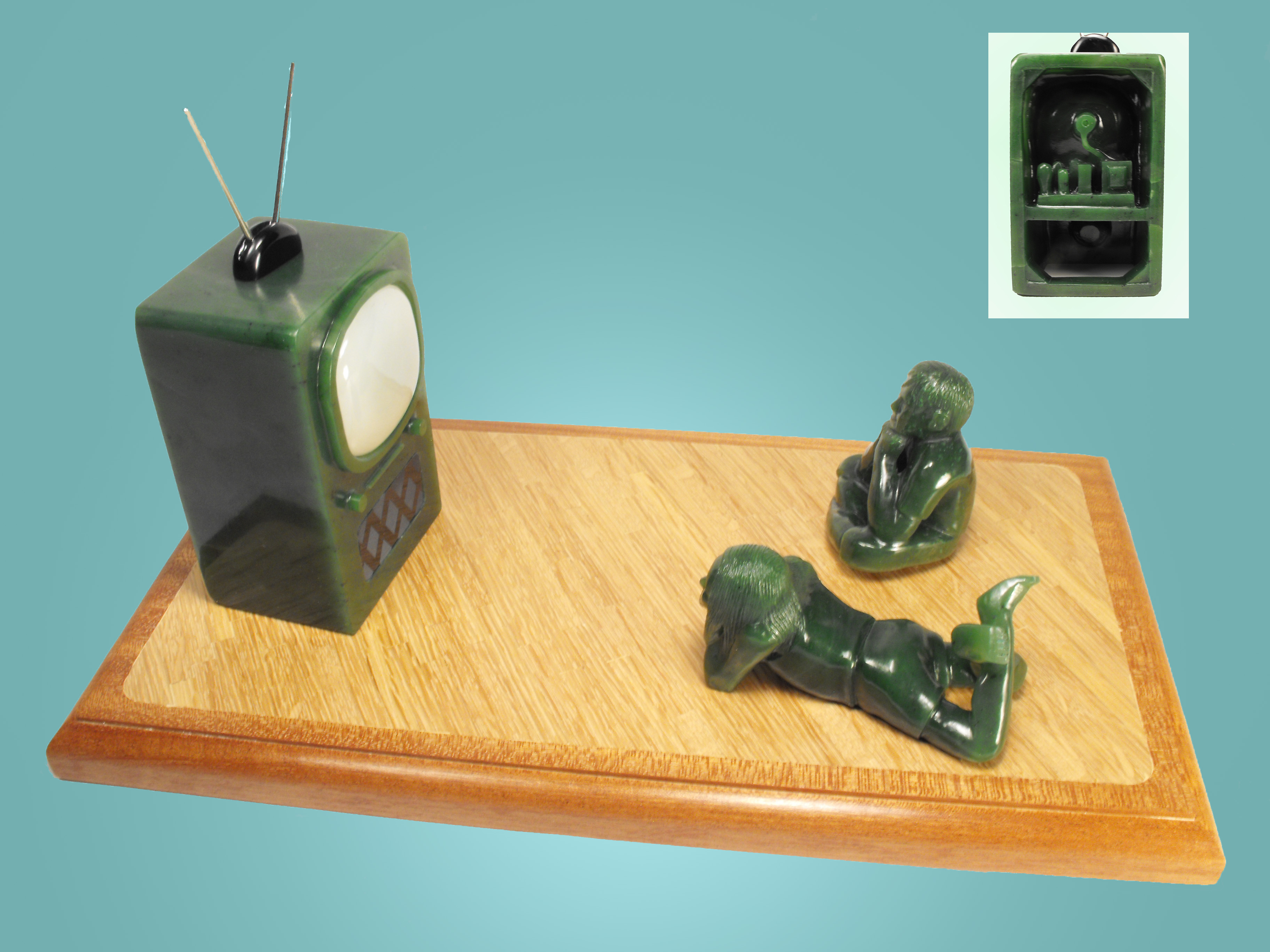
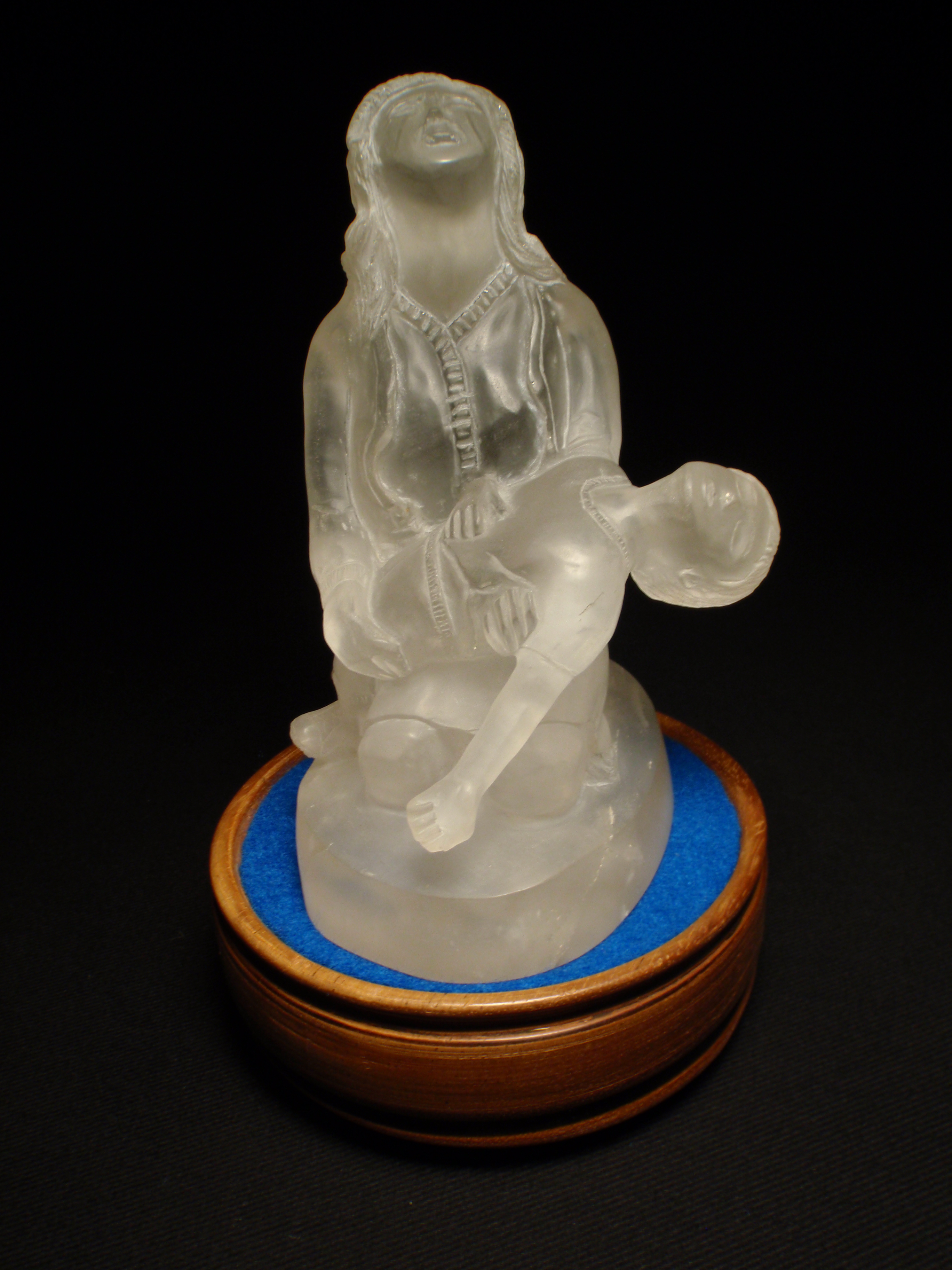 The carvings Grief and Blue Octopus were a temporary hiatus from jade during an early interval of depleted personal jade inventory. Grief was carved from a single Arkansas quartz crystal. Although a good carving material in its own right its appeal did not surpass that of nephrite. The entire carving is of a frosted surface but for the two polished tears streaming down the woman's cheeks. The intent of the carving was to project to the viewer raw emotion. Although that effect seems to have been achieved well enough, the subject is a bit macabre. No other attempt along such a theme has been made since.
The carvings Grief and Blue Octopus were a temporary hiatus from jade during an early interval of depleted personal jade inventory. Grief was carved from a single Arkansas quartz crystal. Although a good carving material in its own right its appeal did not surpass that of nephrite. The entire carving is of a frosted surface but for the two polished tears streaming down the woman's cheeks. The intent of the carving was to project to the viewer raw emotion. Although that effect seems to have been achieved well enough, the subject is a bit macabre. No other attempt along such a theme has been made since. 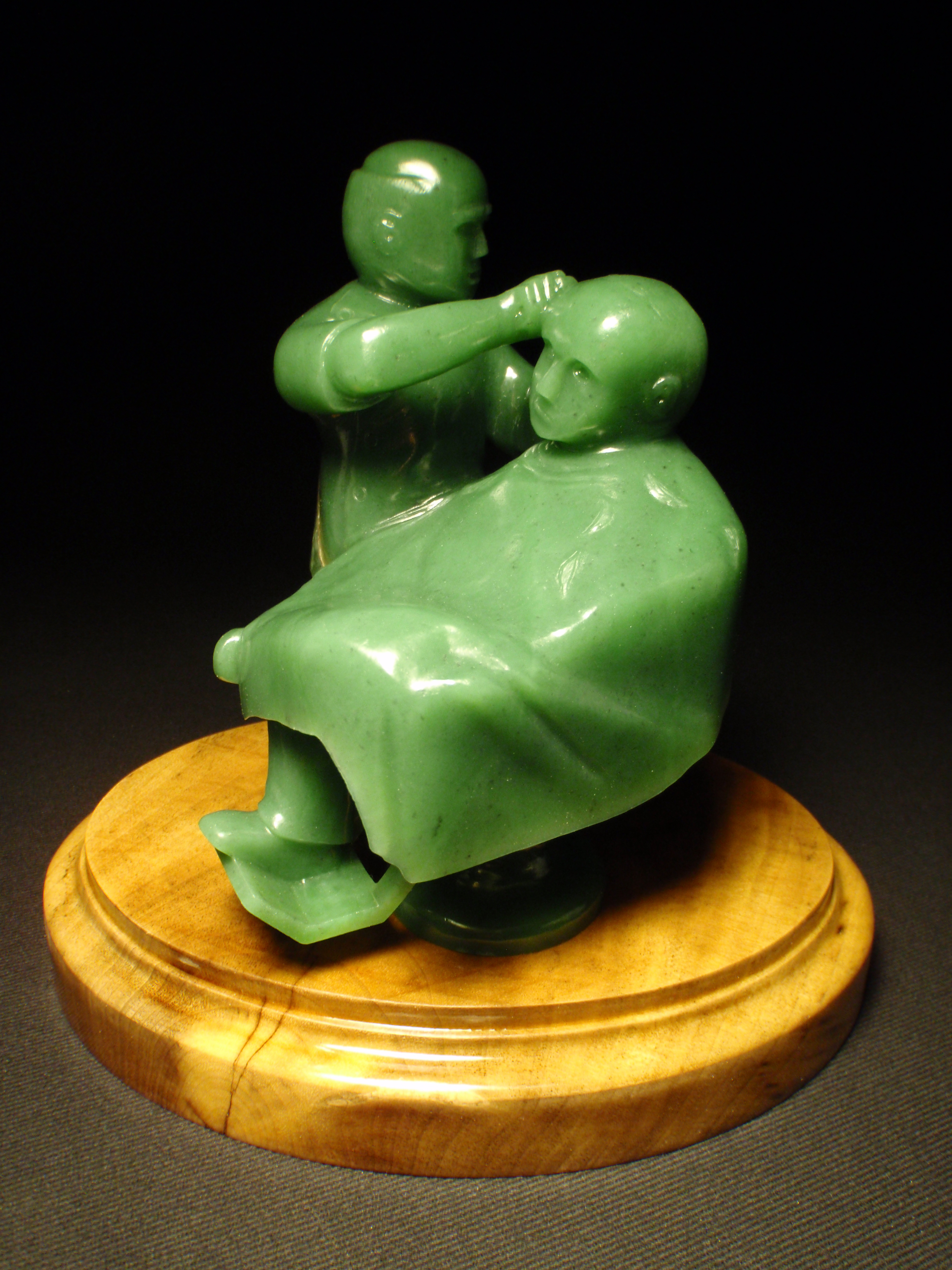

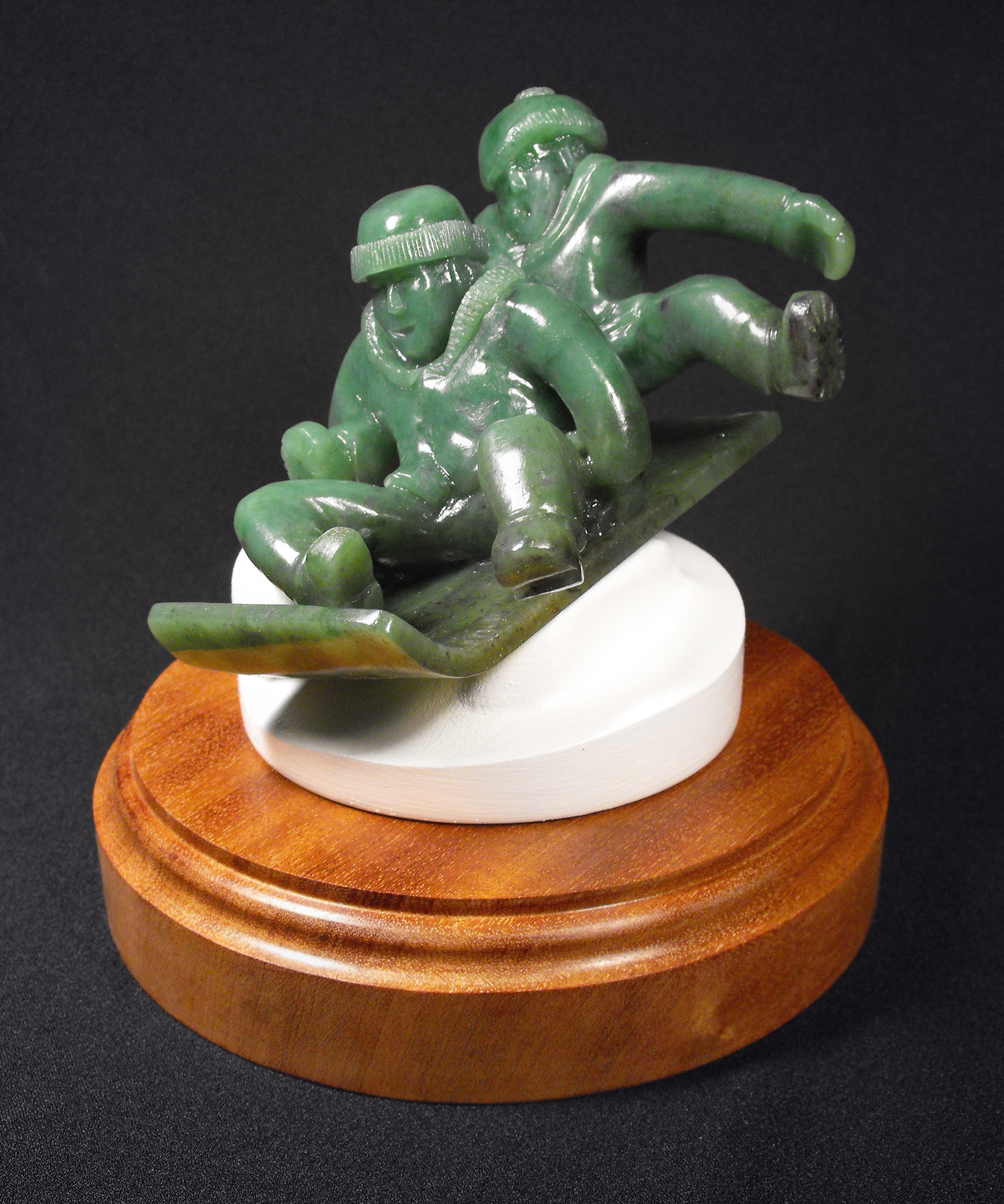
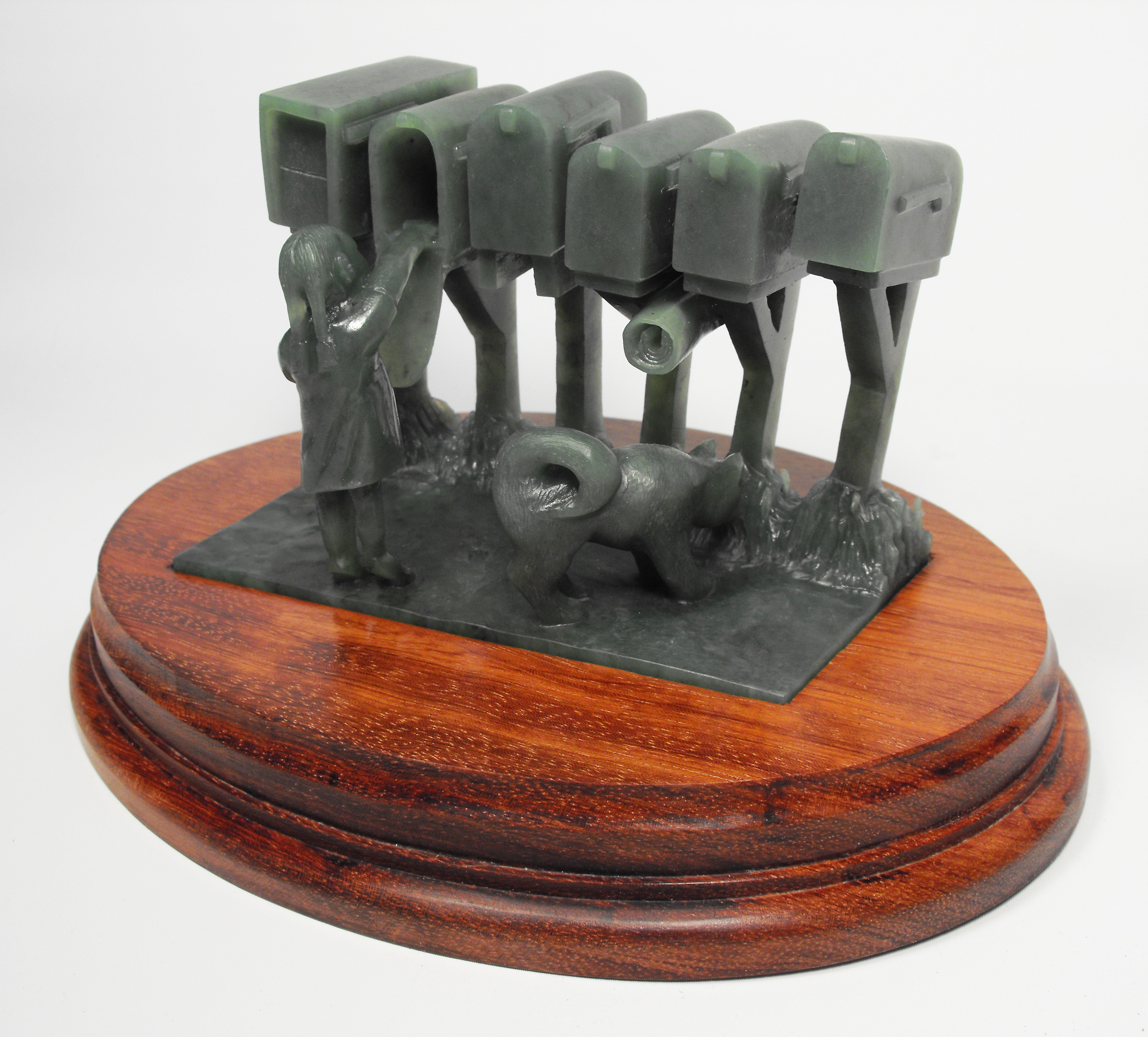 The Cameraman carving was a particularly challenging subject. A 1:1 model was crafted of wood and clay. Initial cuts were made with a saw then came the grinding. And more grinding. What turned out to be a constant dilemma was creating the tripod legs. Not only are there angles within each tripod leg that must match the others but that all three tripod legs required the same angles to arrive at the same corresponding platform position. No small number of templates were created from phenolic sheet (electronic insulative material) to act as guides. It was a painstaking process of grind, measure, compare, grind, measure, compare.
The Cameraman carving was a particularly challenging subject. A 1:1 model was crafted of wood and clay. Initial cuts were made with a saw then came the grinding. And more grinding. What turned out to be a constant dilemma was creating the tripod legs. Not only are there angles within each tripod leg that must match the others but that all three tripod legs required the same angles to arrive at the same corresponding platform position. No small number of templates were created from phenolic sheet (electronic insulative material) to act as guides. It was a painstaking process of grind, measure, compare, grind, measure, compare. 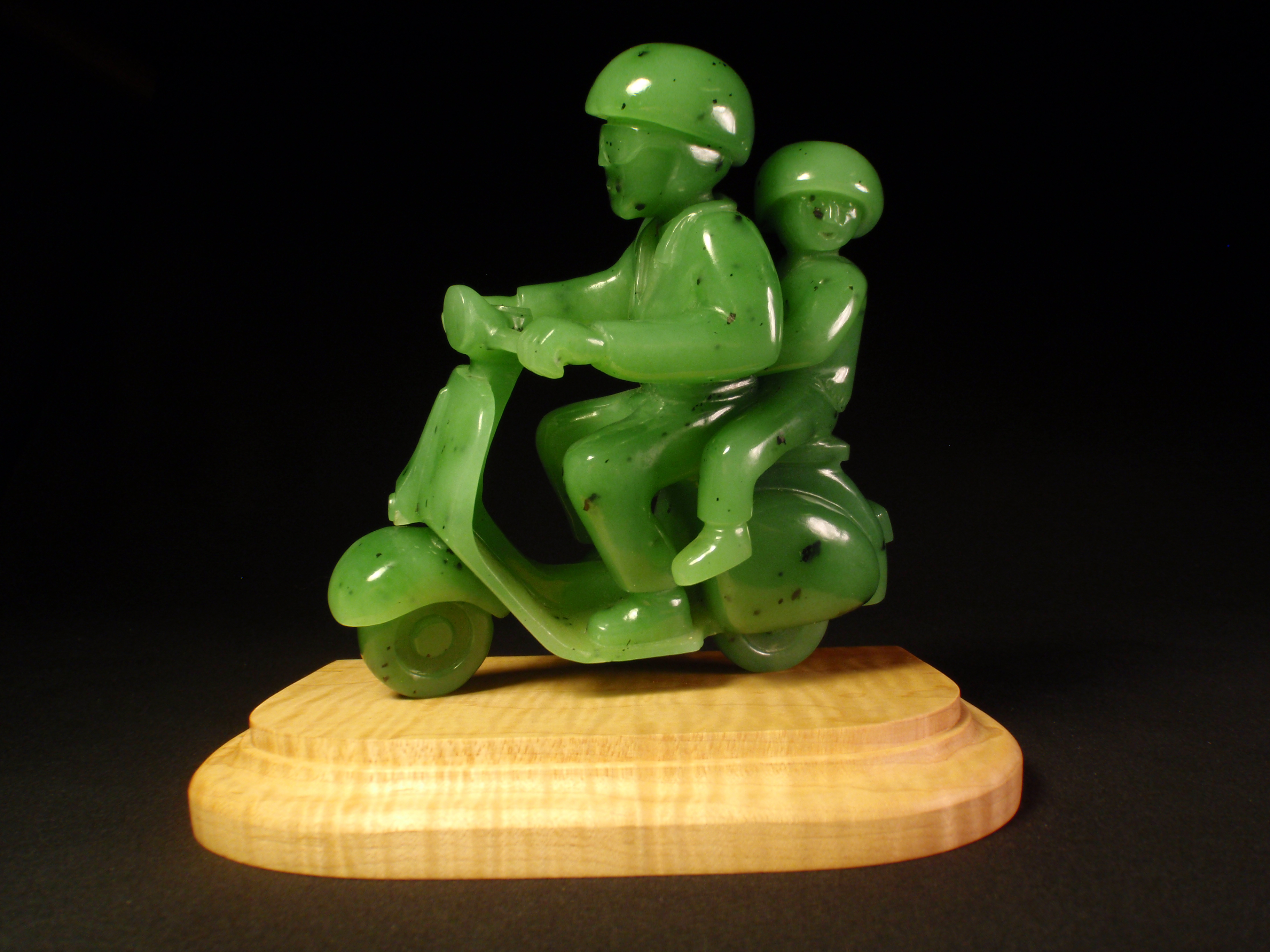 It had been the intention this year to begin depleting the years of accumulated jade scraps to use in smaller short interval projects such as amulets and jewelry items. For some reason these 73 year old hands could not resist embarking on yet another months long project. And only recently yet another jade candidate for a larger project somehow found its way into the shop inventory. Oh, but if there only were another forty years of opportunity.
It had been the intention this year to begin depleting the years of accumulated jade scraps to use in smaller short interval projects such as amulets and jewelry items. For some reason these 73 year old hands could not resist embarking on yet another months long project. And only recently yet another jade candidate for a larger project somehow found its way into the shop inventory. Oh, but if there only were another forty years of opportunity.